Effect Magazine’s Dominic Lutyens looks back over 2023 in design, and examines the themes and trends that are emerging on the horizon for 2024
What happened in design in 2023?
This time last year, we reported on a macro-trend triggered by the pandemic – interior designers creating compartmentalised homes rather than open-plan layouts, since people working from home required private spots to avoid disturbing other household members. Mentioning this in our (hoped-for) post-Covid age might seem irrelevant, yet the effects of the pandemic were still being felt in 2023, chiefly through learning that many products launched then were developed by designers during lockdowns. Such creative activity often involved putting a contemporary spin on ancient handcrafts. Textile designer Kate Loudon Shand deployed the crewel technique to stitch vibrantly colourful pop motifs onto traditional-looking linen. A widespread appropriation of handcrafts dovetailed with a growing concern for sustainability and a rejection of throwaway consumerism. In 2023, sustainability was far less likely to be deemed a trend as designers raced to embrace the circular economy permanently. Just before the pandemic, another high-profile creative Henry Holland switched from his former specialism, fashion, to homeware, specifically ceramics, some made of waste materials.

The ceramics boom
Henry Holland’s enthusiasm for ceramics is part of a global pottery-making and related ceramics-collecting boom firmly in evidence in 2023. This has been rising steadily and unexpectedly for the past five years, both among collectors and at a grass-roots level with people of all ages signing up to pottery classes – a physical activity welcomed as an antidote to the tyranny of digital communication. Proving highly collectible is 20th-century studio pottery, notably the exquisitely pared-back, often colourful vessels of modernist potter Lucie Rie.
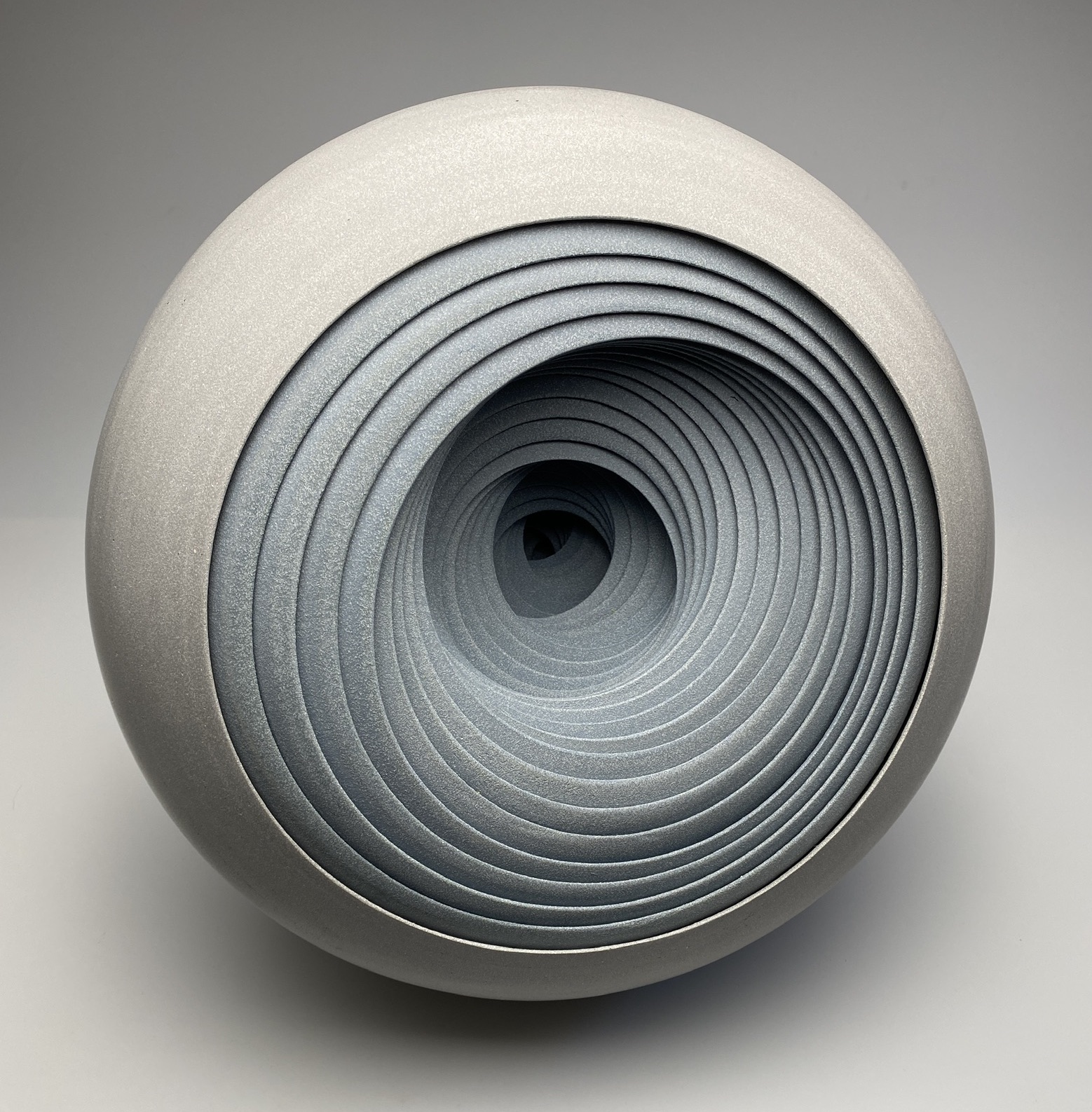
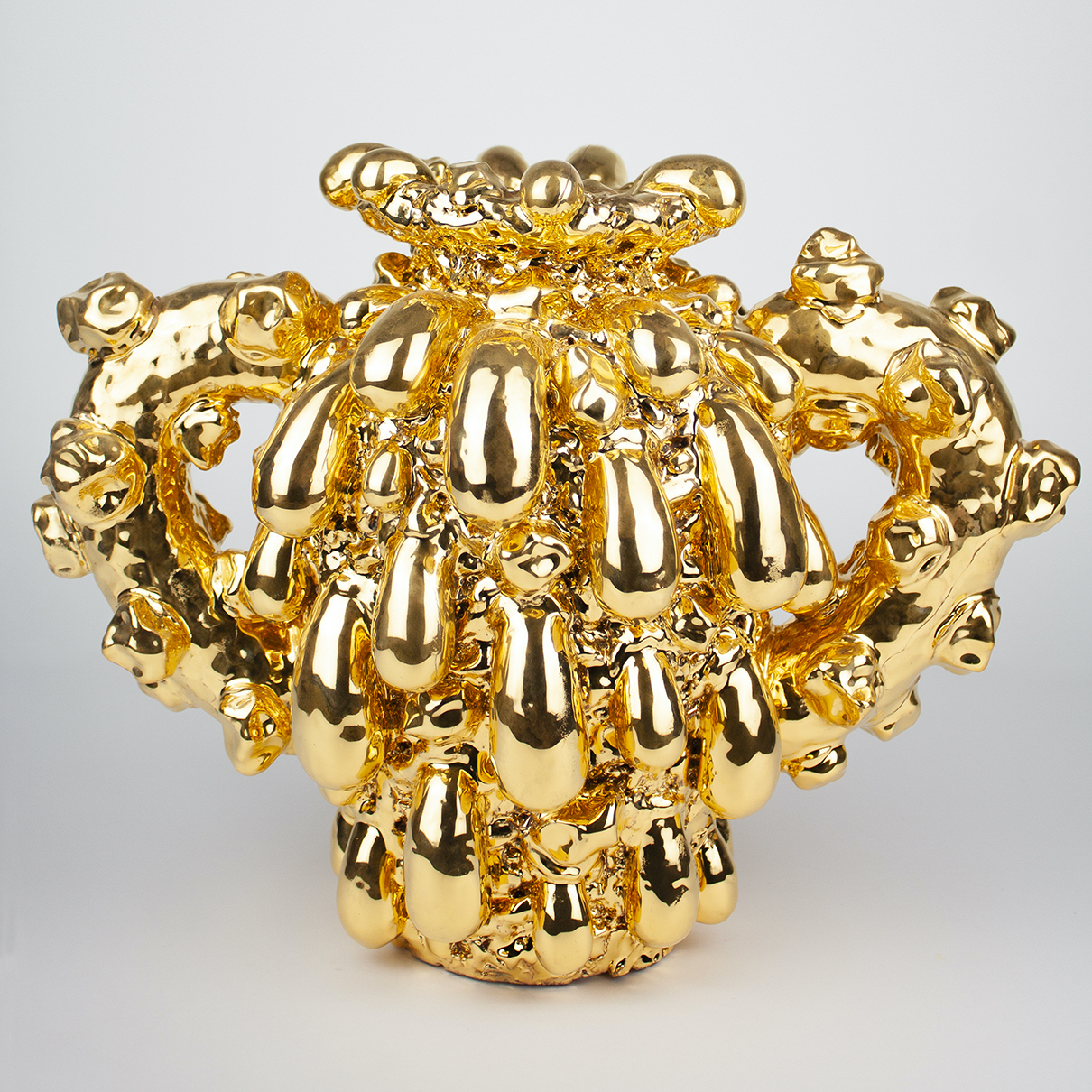
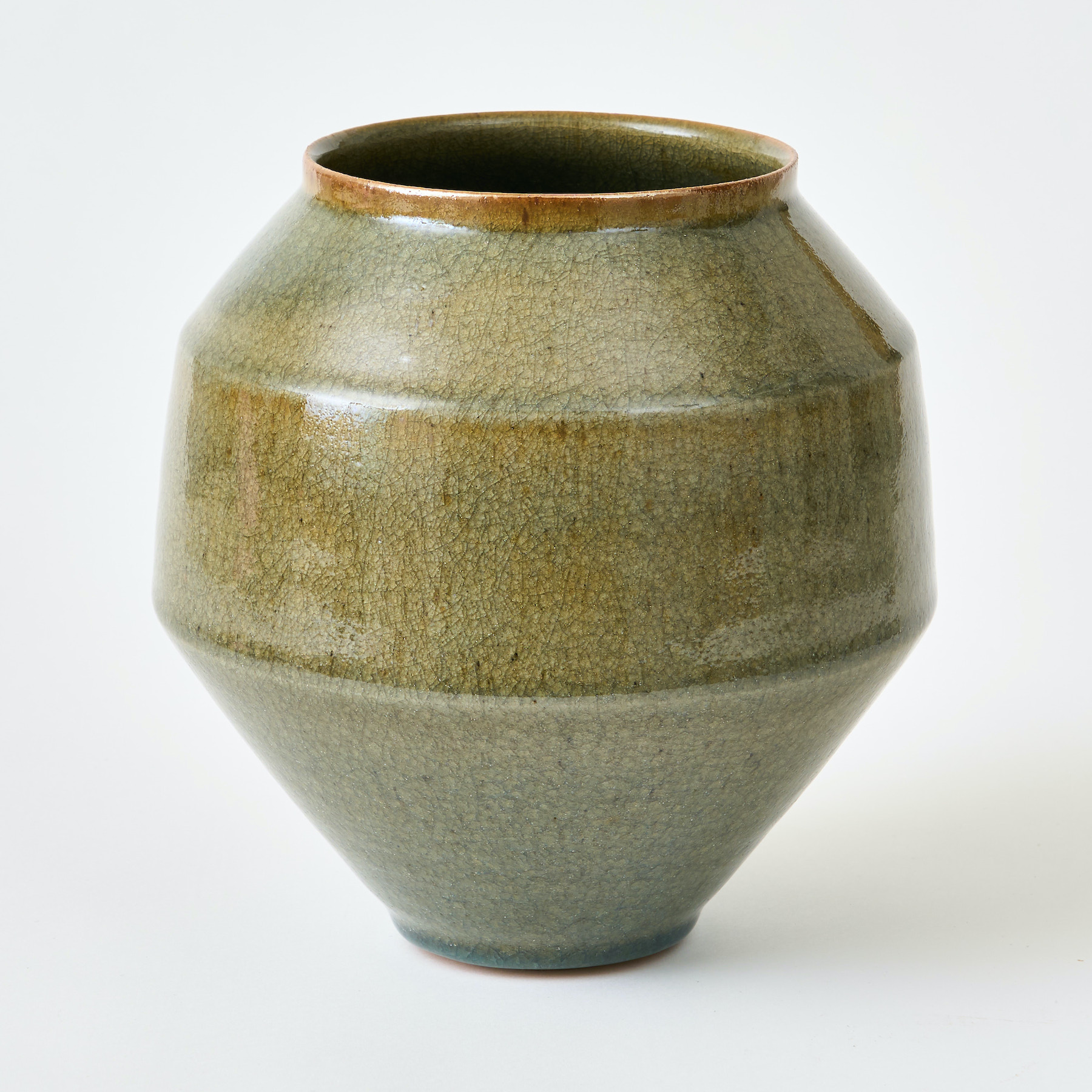
In the past two decades, artist Grayson Perry and potter Edmund de Waal have helped to elevate ceramics from a craft to fine art, as have recent ceramics-themed exhibitions at prestigious art galleries. Today’s cutting-edge contemporary ceramicists increasingly favour the kind of self-expression normally associated with fine art – and collectors seek out ceramicists who have developed a truly personal visual language. Other high-profile ceramicists include Magdalene Odundo, Lubna Chowdhary, Olivia Walker, Ron Nagle and ceramics wunderkind Florian Gadsby, a whizz at showcasing his pottery prowess via social media (he has 1.8m followers on TikTok and over 850,000 on Instagram).
Hand-painted indoor murals
There was more evidence of an art/design crossover with a burgeoning trend for exuberantly colourful indoor murals. Designers such as Camille Walala, known for painting entire facades of urban buildings with jazzy abstract patterns, injecting colour into grey urban streets, surely helped to kickstart a trend that has since invaded our homes. Many artists took this up during lockdowns and have since let rip, painting walls and ceilings in homes with wildly bold, mainly abstract murals.
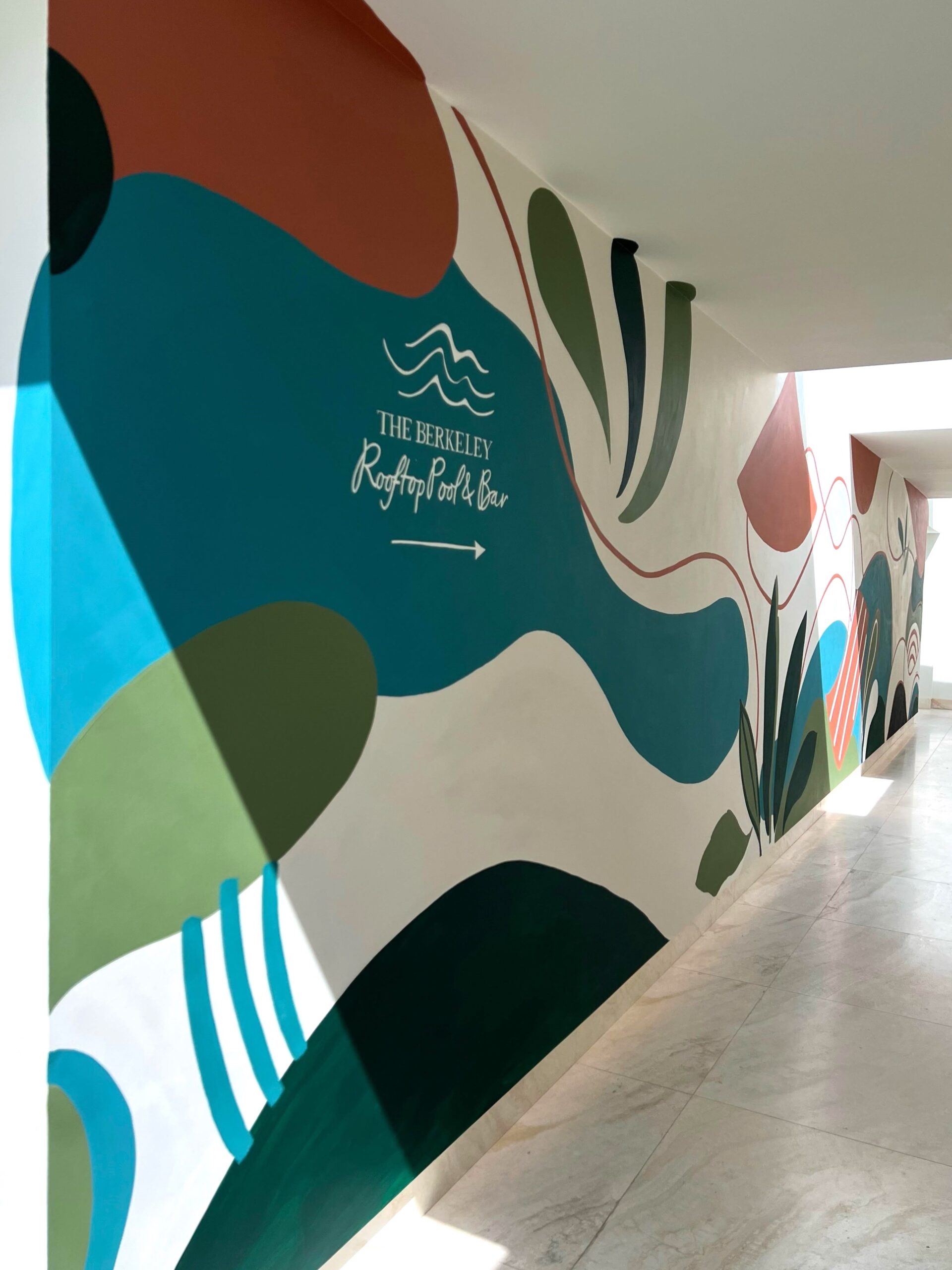
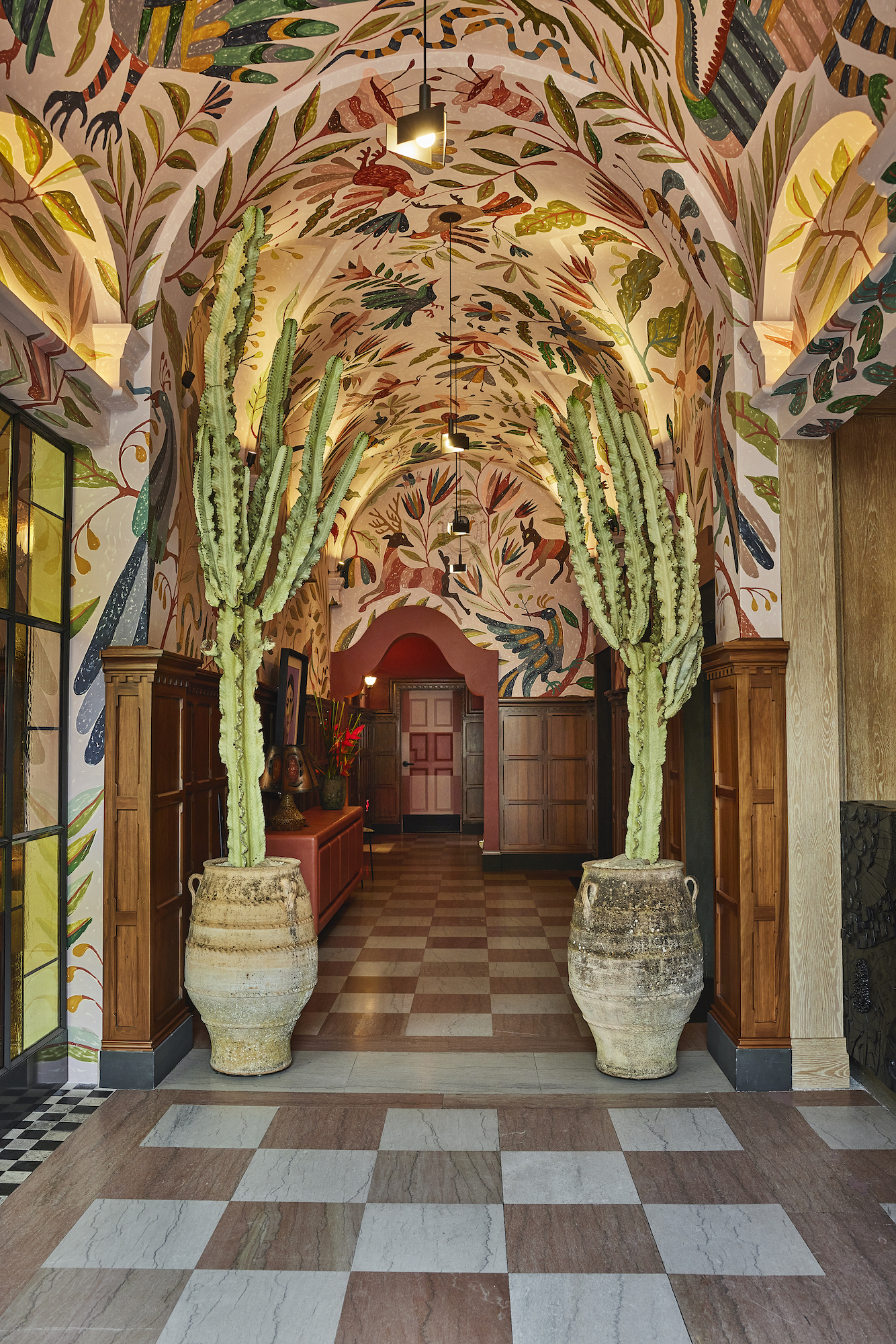
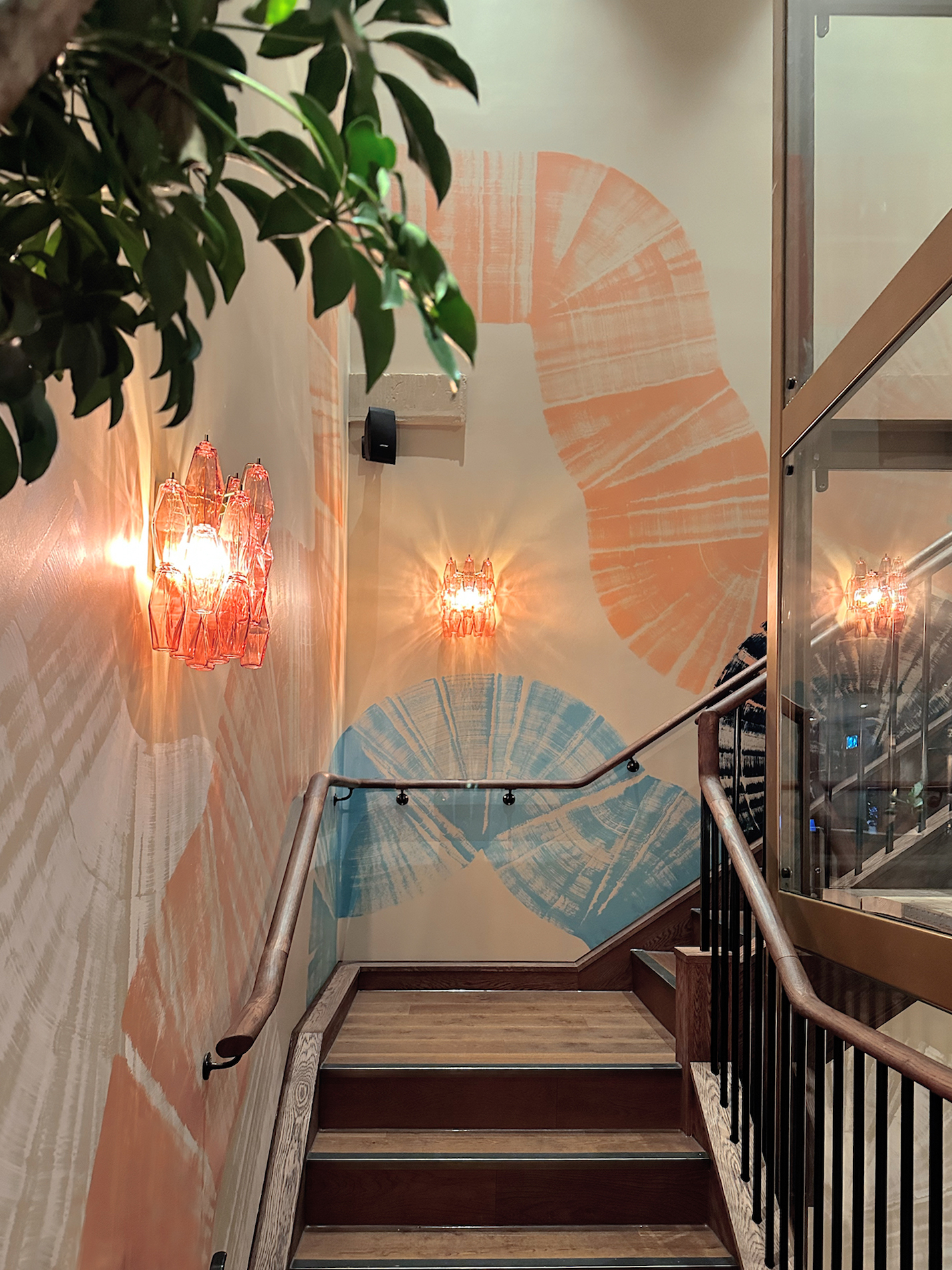
Recognising that murals can help public venues establish a sense of place, interior designers and swanky establishments alike commissioned artists to create site-specific murals, some with figurative imagery. At the Kelly Wearstler-designed Proper Hotel in Los Angeles, artist Abel Macias painted a mural teeming with exotic flora and fauna inspired by Mexican folk tales. Overall, the aim of the interior (where Spanish and Portuguese influences are also present) was to celebrate Los Angeles’ multicultural artistic traditions. And for London hotel The Berkeley, artist and designer Chiara Perano painted an abstract mural whose blue tones nod to its rooftop swimming pool and its greens to neighbouring Hyde Park.
Bistro-inspired interiors
Apparently in a reaction against our technology-driven world, scarily accelerated by AI, a British design world coterie is determinedly turning back the clock and cultivating charmingly romantic interiors redolent of early 20th-century French bistros or Viennese homes. This nostalgic, mainly Francophile style’s hallmarks include gauzy, ecru café curtains hung from a brass pole that veil the lower half of windows, providing privacy while letting daylight filter in, rumpled linen tablecloths and those bolster cushions beloved of the French. (In publicity photos of the style, mobiles and laptops are banished.)
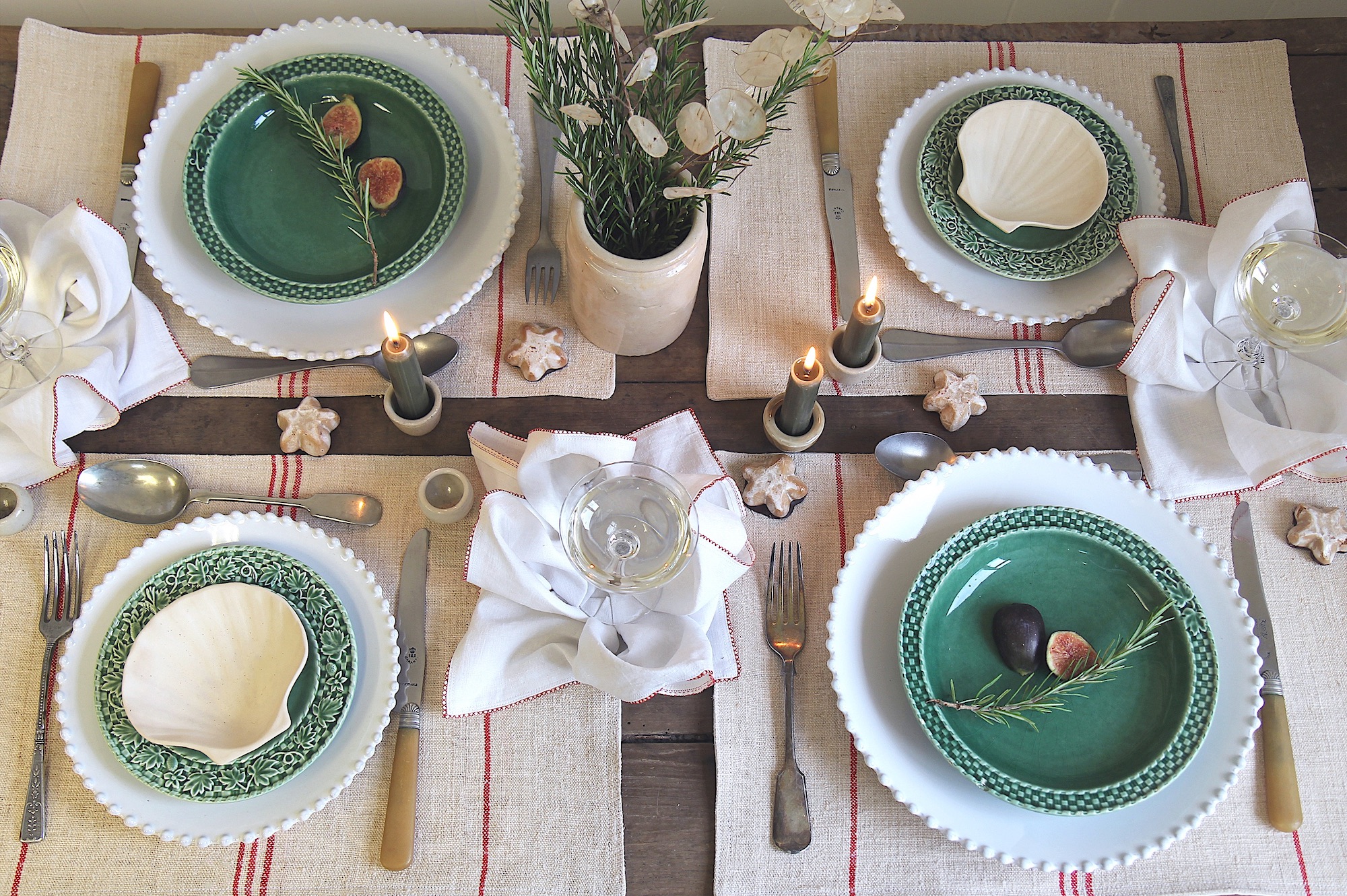
Half-close your eyes for a minute in such interiors and you can almost hear the thunk of petanque balls outside. Purveyors of this style include East London Cloth and Domestic Science that stock “bistro napkins” and zinc-topped garden dining tables respectively. Interior designer Beata Heuman pays homage to fin-de-siècle Vienna with her fabric lampshades inspired by ones produced by Vienna art school the Wiener Werkstätte in the early 1900s.
Eco-conscious cork
Cork proved a popular material for homeware in 2023 – hardly surprising given its many admirable qualities: it’s renewable, biodegradable and promotes wellness since it’s hypoallergenic, antimicrobial and comfortable to walk on.
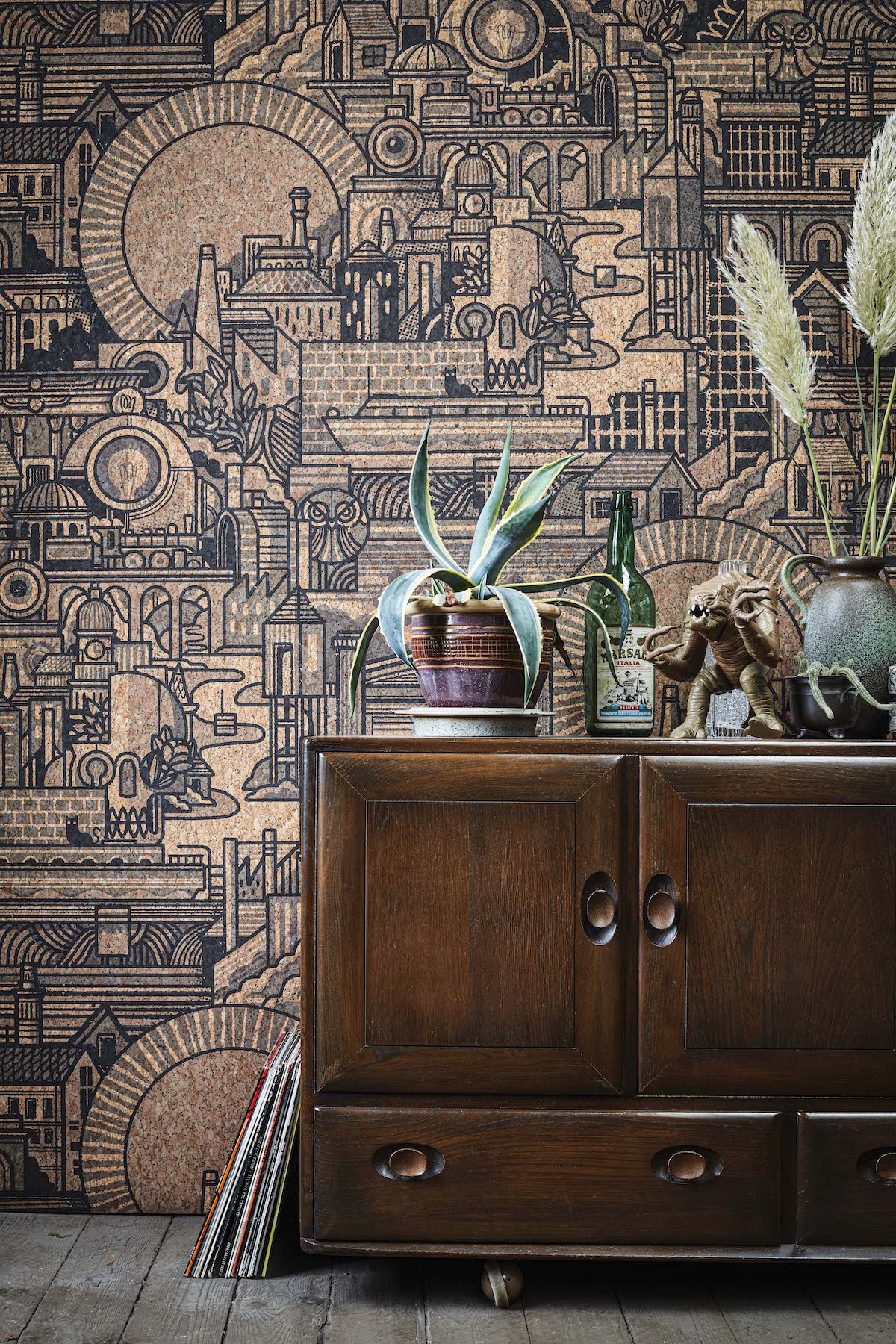
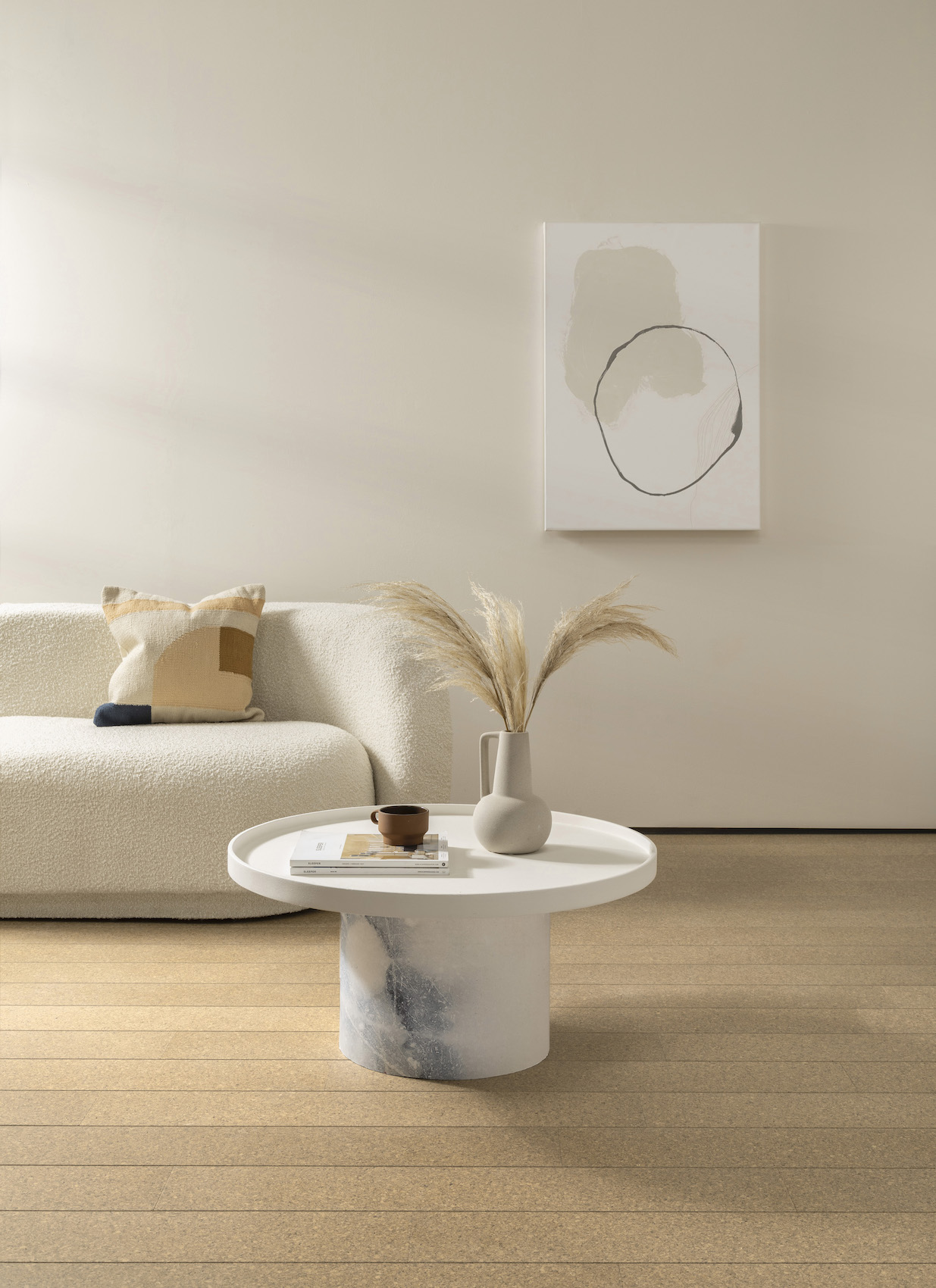
Architects are increasingly opting for cork flooring and walls in recognition of its insulating and acoustic properties, to say nothing of its aesthetically pleasing warm colour and surface. Leeds-based The Monkey Puzzle Tree collaborated with artist Drew Millward to create a wallcovering emblazoned with an intricately detailed industrial landscape, while London-based designer Matilda Goad channelled the 1970s vogue for cork, manifested by her cork lamp bases and vases.
Sassy stripes
One of the most accessible and feel-good trends of 2023 was a vogue for stripes visible on everything from shower units to lampshades, the latter a more affordable and handy way to zhuzh up and update a room. Designers gave this most archetypal of patterns a contemporary twist by opting for boldly graphic or unexpected colour combos, from SR toothpaste-like red and white stripes for lampshades to striped bespoke cushions in almost any colour under the sun, courtesy of Colours of Arley. More arresting still was a trend for ceramic tiles forming dynamic diagonal stripes zipping across walls and floors in bathrooms or on hallway floors.

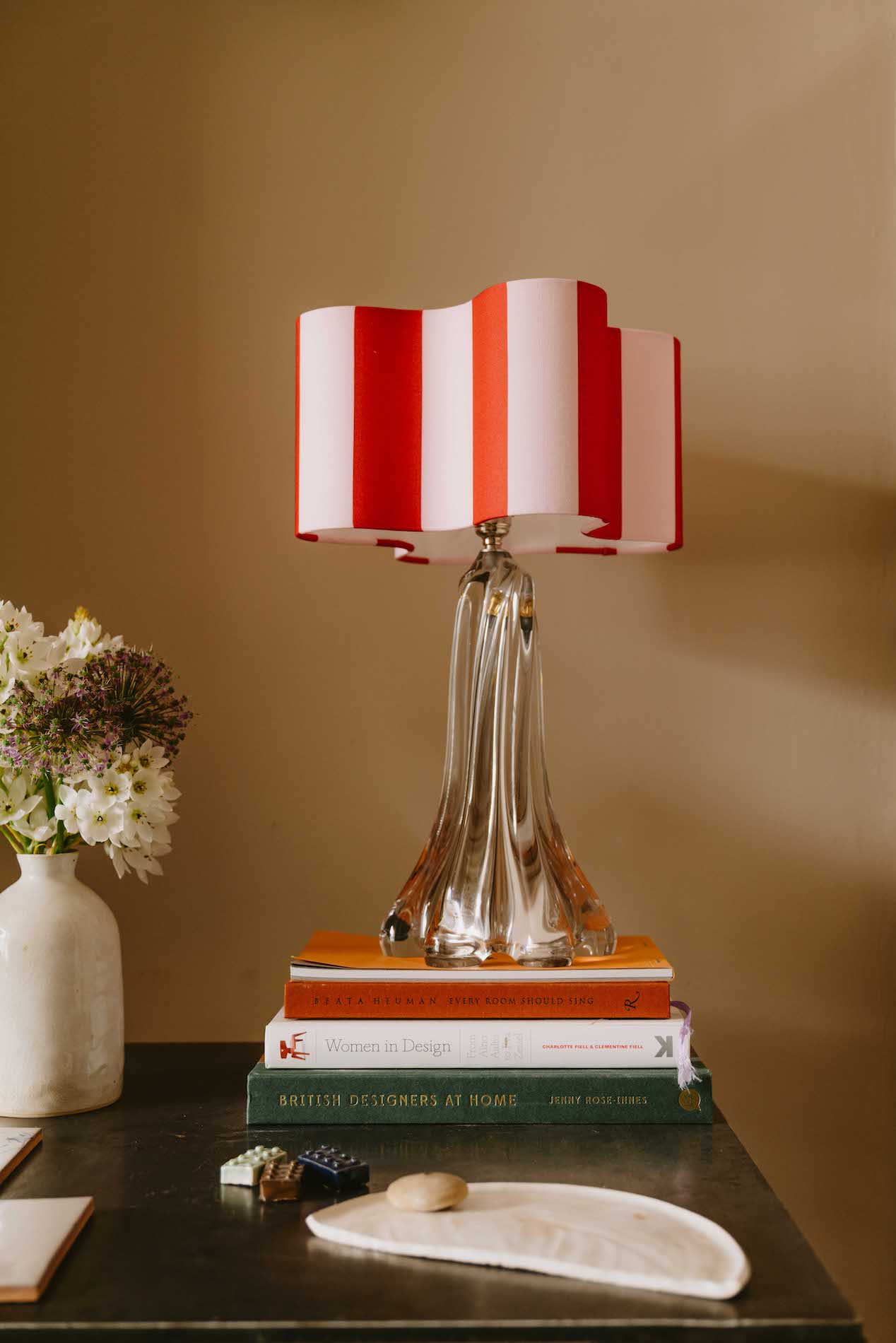
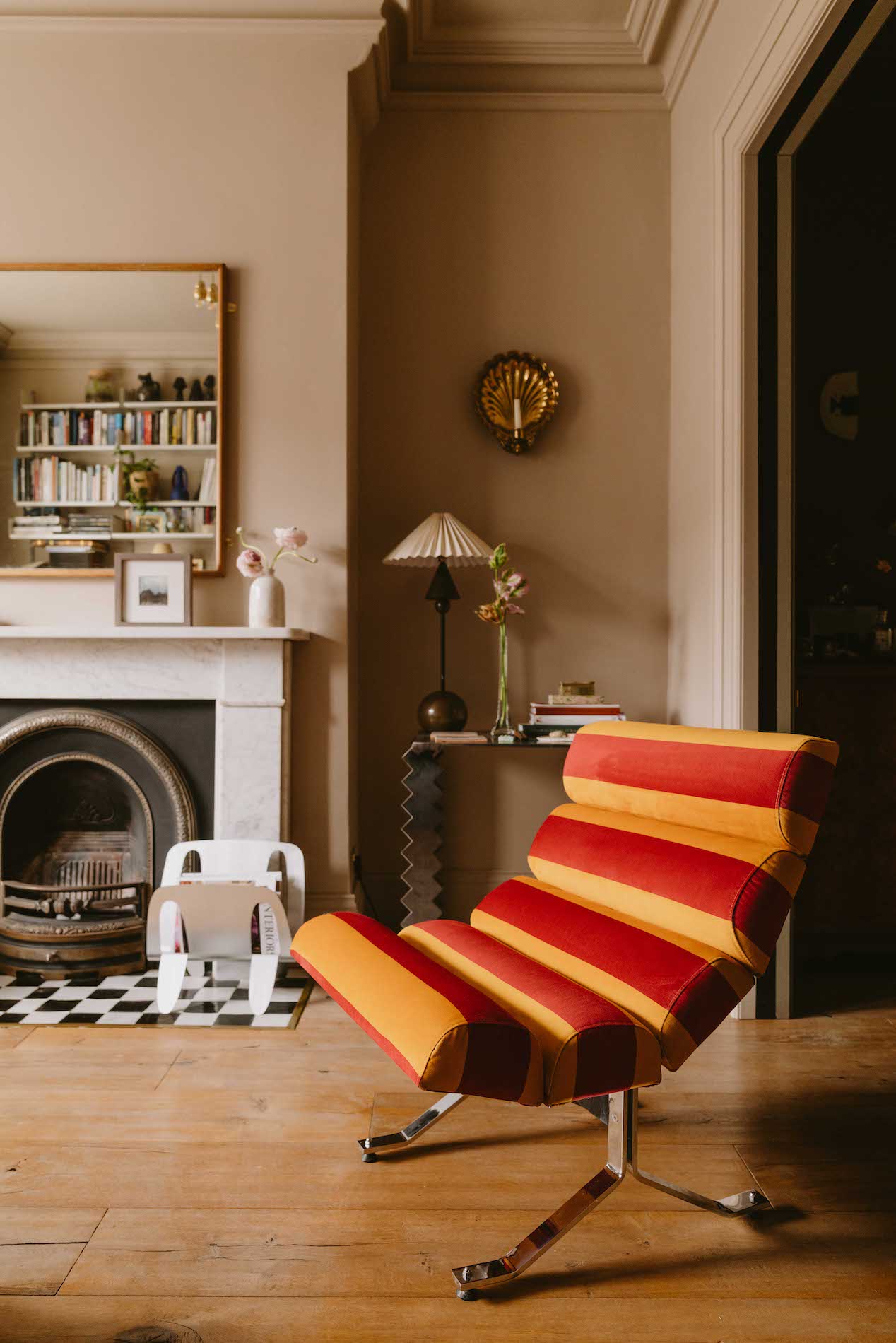
Spring/summer trends: semi-functional mirrors and sociable sofas
Spring and summer saw a trend for semi-functional mirrors intended to be more decorative or sculptural than practical. Some boasted elaborate, decorative frames that put their mirrored surfaces in the shade. Others were less functional still, their mirrored surfaces coated with metallic or gorgeously jewel-coloured finishes that prevented them from being usefully reflective.


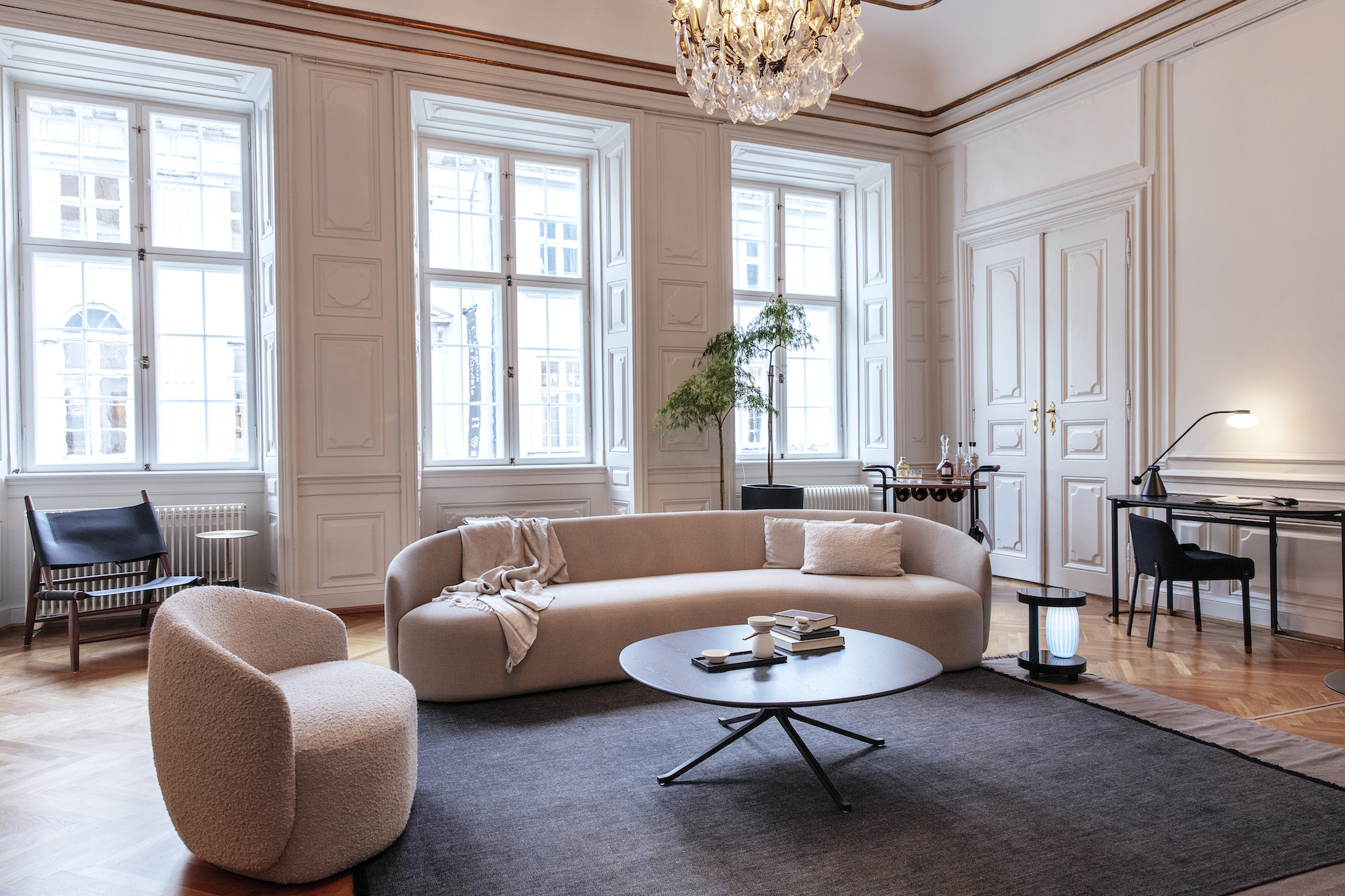
There was also a discernible demand for roomy, crescent-shaped sofas that made it easier for people perched on them to face each other and chat – a boon for those hungering to socialise post-pandemic.
Autumn/winter trends: postmodernist colour and cocooning textiles
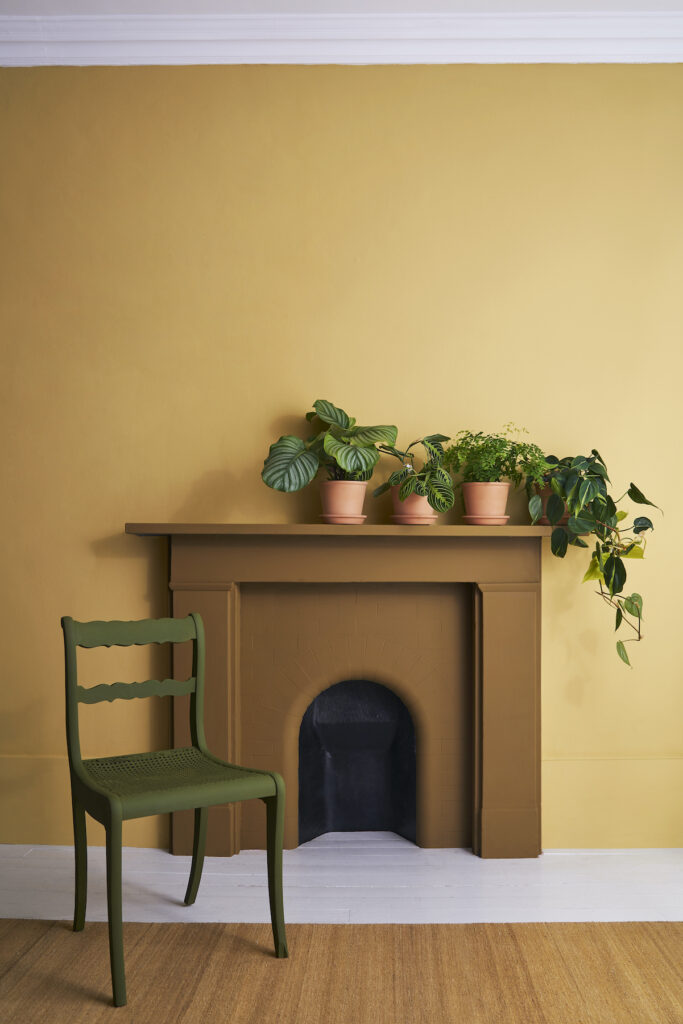


This was a season when interiors pulled in opposing directions. Some sought visual stimulation, provided by audacious postmodernist-inspired colour schemes enlivening such nooks as fireplaces and stairwells. Running counter to this was a yearning for restful, comfortable spaces partly achieved by cocooning yet diaphanous wool curtains that simultaneously allow daylight to enter rooms or by recreating the chic look of traditional French cafés in homes. On an edgier note, several textile designers took inspiration from urban influences, producing rugs and cushions featuring motifs derived from urban architecture or such overlooked elements as manhole covers.
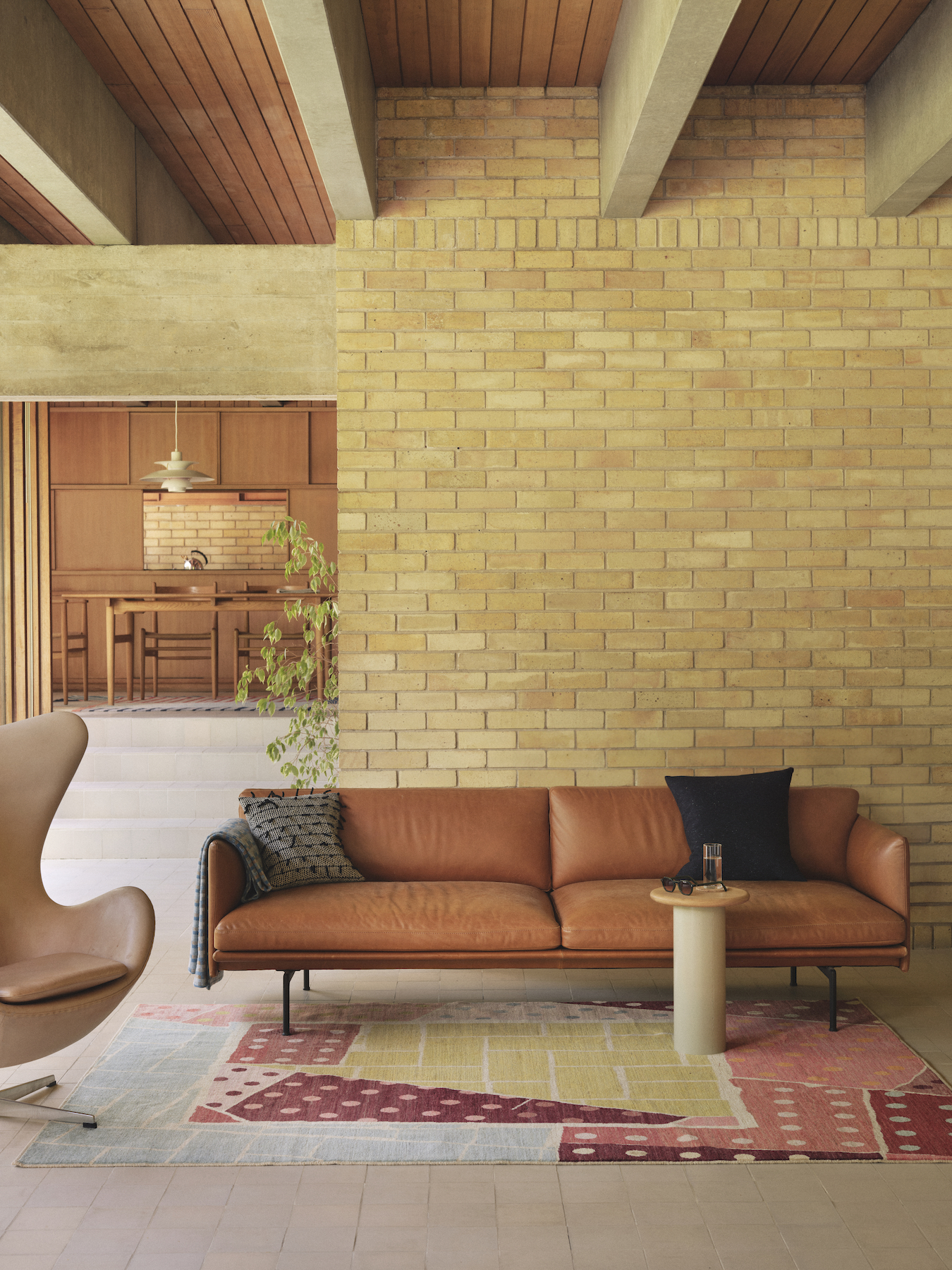
What will happen in design in 2024?
One upcoming trend, possibly related to the mural craze, is to capitalise on the impact paint colours and wall-coverings alone make when decorating rooms. We’re seeing ceilings and walls boldly painted the same arresting colour to immersive, unifying effect or walls lined with textured wallpapers that create a comfortingly enveloping atmosphere.
Wraparound paint schemes
Colour-drenching – a term describing rooms entirely painted in one on-trend hue – looks set to become a major 2024 buzzword. This approach often sees ceilings treated as an additional “wall” painted the same colour as walls. The resulting effect is dramatic and immersive. It’s a look favoured by Lucy Currell, founder of interior design practice Studio Iro, who has painted a client’s entire living room a rich hazelnut hue (a Dulux terracotta shade). “I love using the same colour on walls and ceilings as the eye reads the space differently – in a good way,” she opines. “It avoids harshness of colour difference as the colour blends together, making you feel relaxed and cocooned.”

Will Plowden, co-founder of homeware e-commerce site The Roost, dubs the trend “wraparound colour”. “Traditionally, people have opted to keep woodwork and ceilings white with another colour on walls to add visual interest. However, in 2024, I expect wraparound colour to dominate as a key trend – a look inspired by boutique hotels. Drenching the room in a single colour often gives the feeling of higher ceilings, and, when using a lighter colour, the illusion of greater space.”
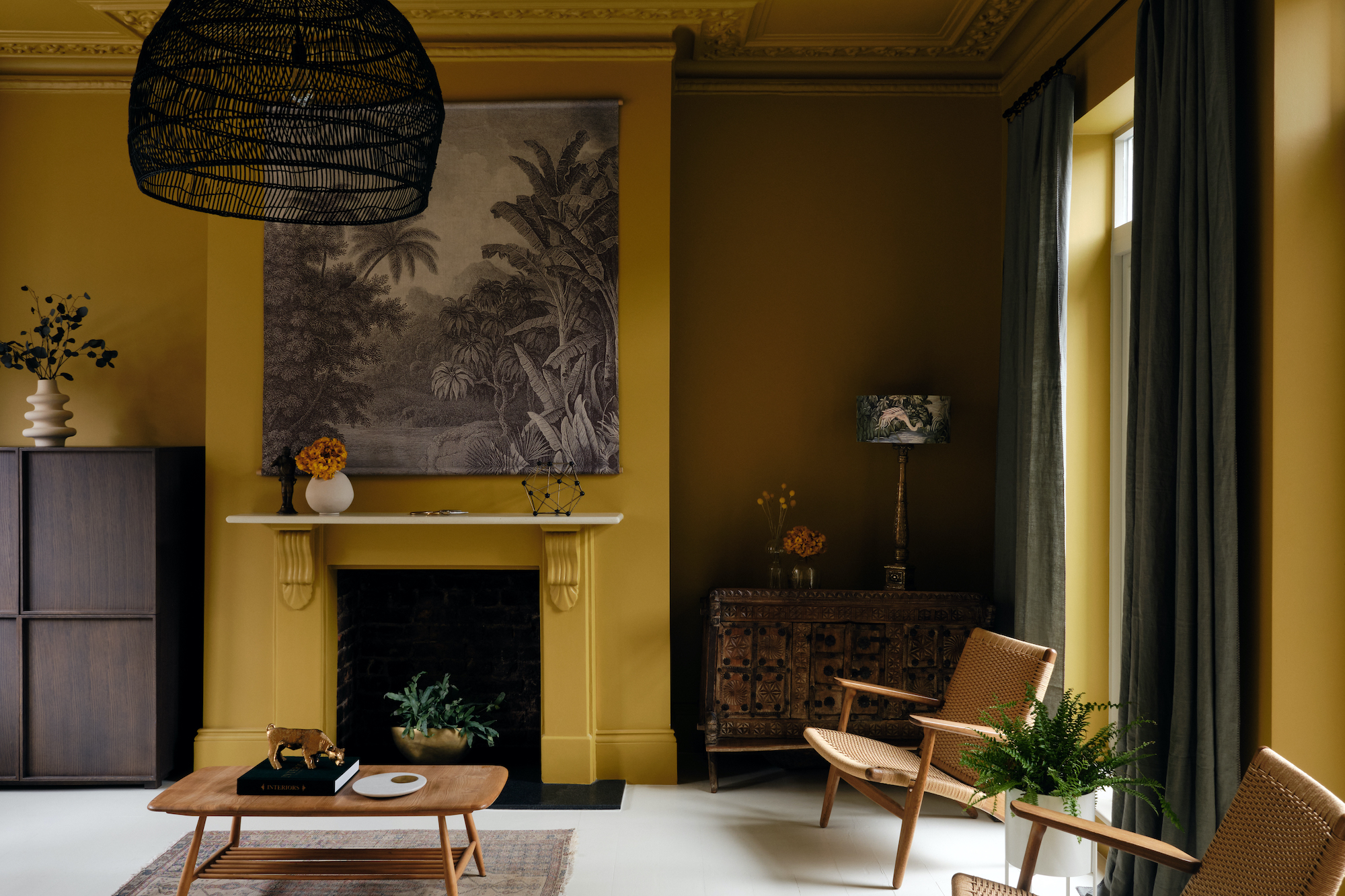
Dominic Mylands, CEO of paint brand Mylands, points out other advantages of wraparound colour schemes: “Flooding an entire room with a single colour creates a unified impression and decreases visual noise. In a scheme we devised with Siri Zanelli of architecture and design studio Collective Works, we enveloped walls with a bespoke shade called Freegrove Mustard co-created with Andrea Gelardin, a creative director.” Despite the homogeneous look of wraparound schemes, changing daylight in this room results in unpredictable, visually pleasing tonal variations in its mustard shade: “The walls evolve from a warm honey to a deeper caramel, depending on the quality of daylight in it.”
Textured wallpapers
Designers are exploring a similarly cocooning effect by lining rooms with textured wallpapers or digitally printed wallpapers convincingly mimicking textures. With the former, tactile finishes enhance the wallpapers’ immersive impact.
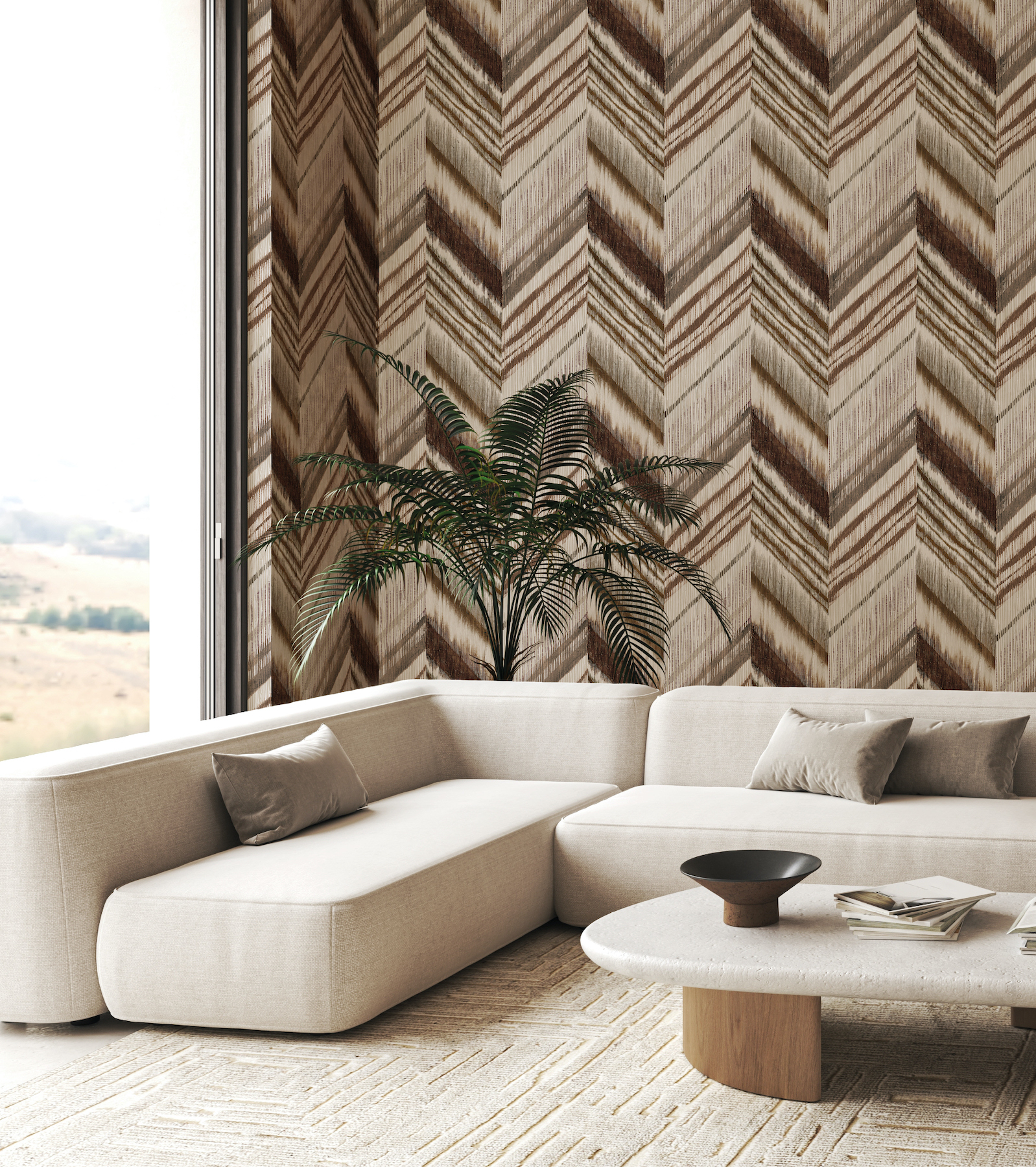
GP & J Baker’s Faraway wallpaper collection includes a digitally printed faux-grasscloth design called Santa Fe that features a large-scale chevron pattern in browns or blue. Its geometric pattern and café-au-lait colourway have an Art Deco vibe, reminiscent, too, of the Deco interiors of 1970s London lifestyle emporium Big Biba. According to Ann Grafton, GP & J Baker’s managing and creative director, “Texture gives a room depth. Applied to a fifth wall, too – the ceiling – textured wallpapers add visual interest and a luxurious element of comfort.”
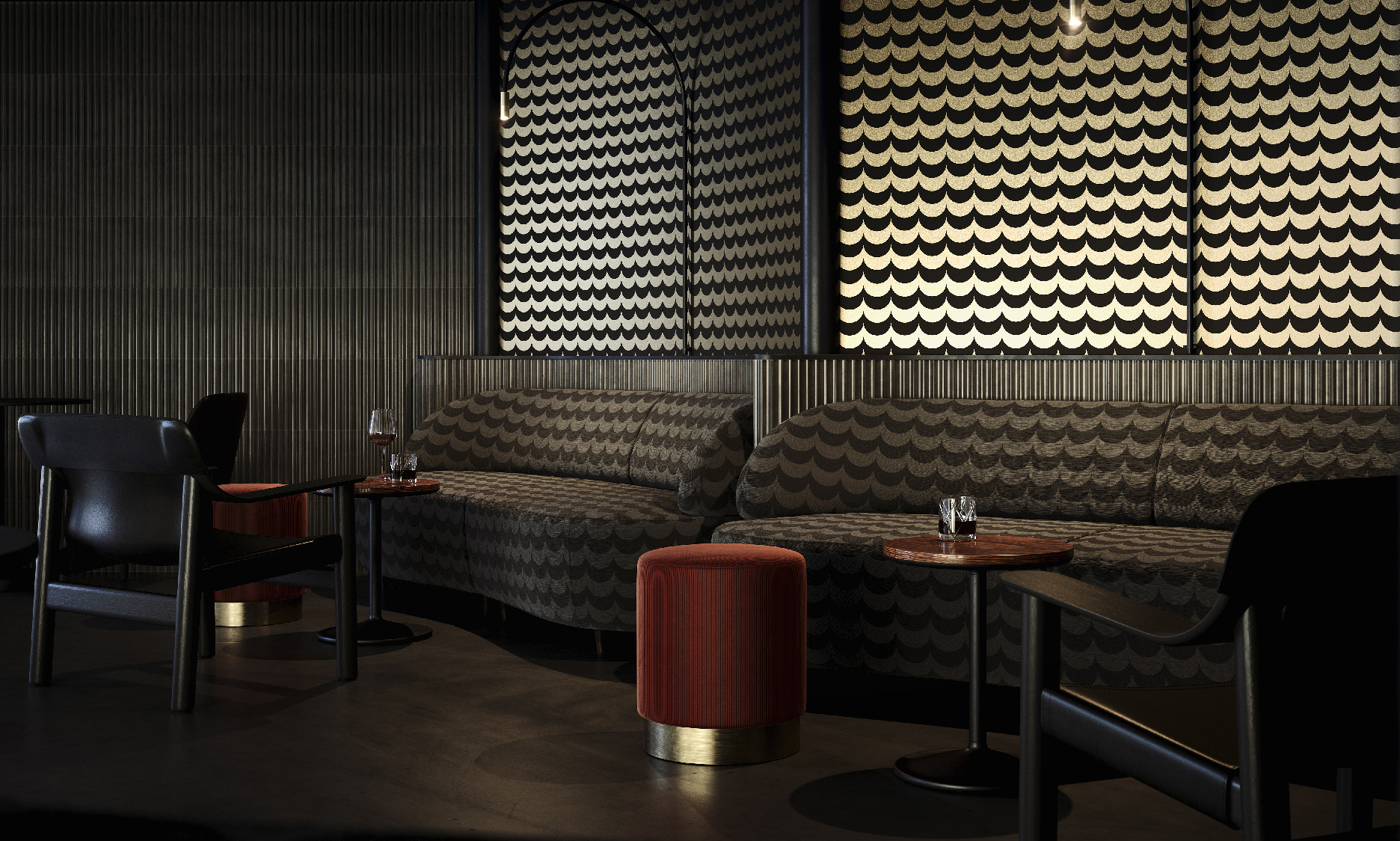
By contrast, Margate-based Erica Wakerly dreams up real textured wallpapers, albeit subtle flock papers. The clean-lined patterns and lightness of her Modern Flock wallpaper collection, featuring four designs, differentiates it from the opulent flock wallpapers invented in the 17th century or the oppressively ornate flock wallpapers once commonly seen in Indian restaurants. In Wakerly’s designs, bas-relief flock traces fine lines or covers larger surfaces. As daylight changes direction and in intensity throughout the day – or when an electric light illuminates the wallpaper – the parts in relief cast shadows, becoming more visible. The colours of her wallpapers range from monochrome white on white to graphic gold and black patterns, the former redolent of Op Art, the latter of Art Deco.
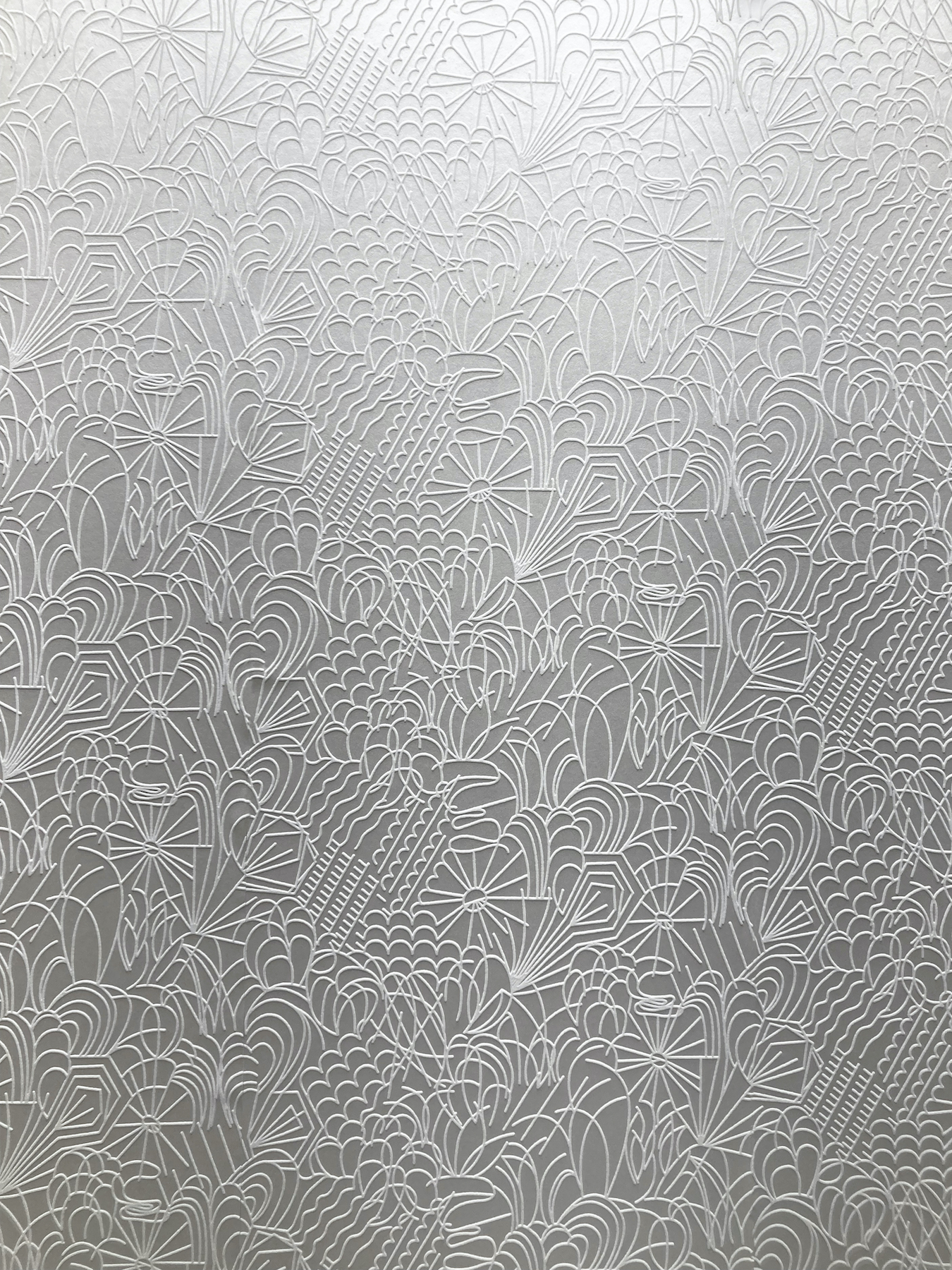

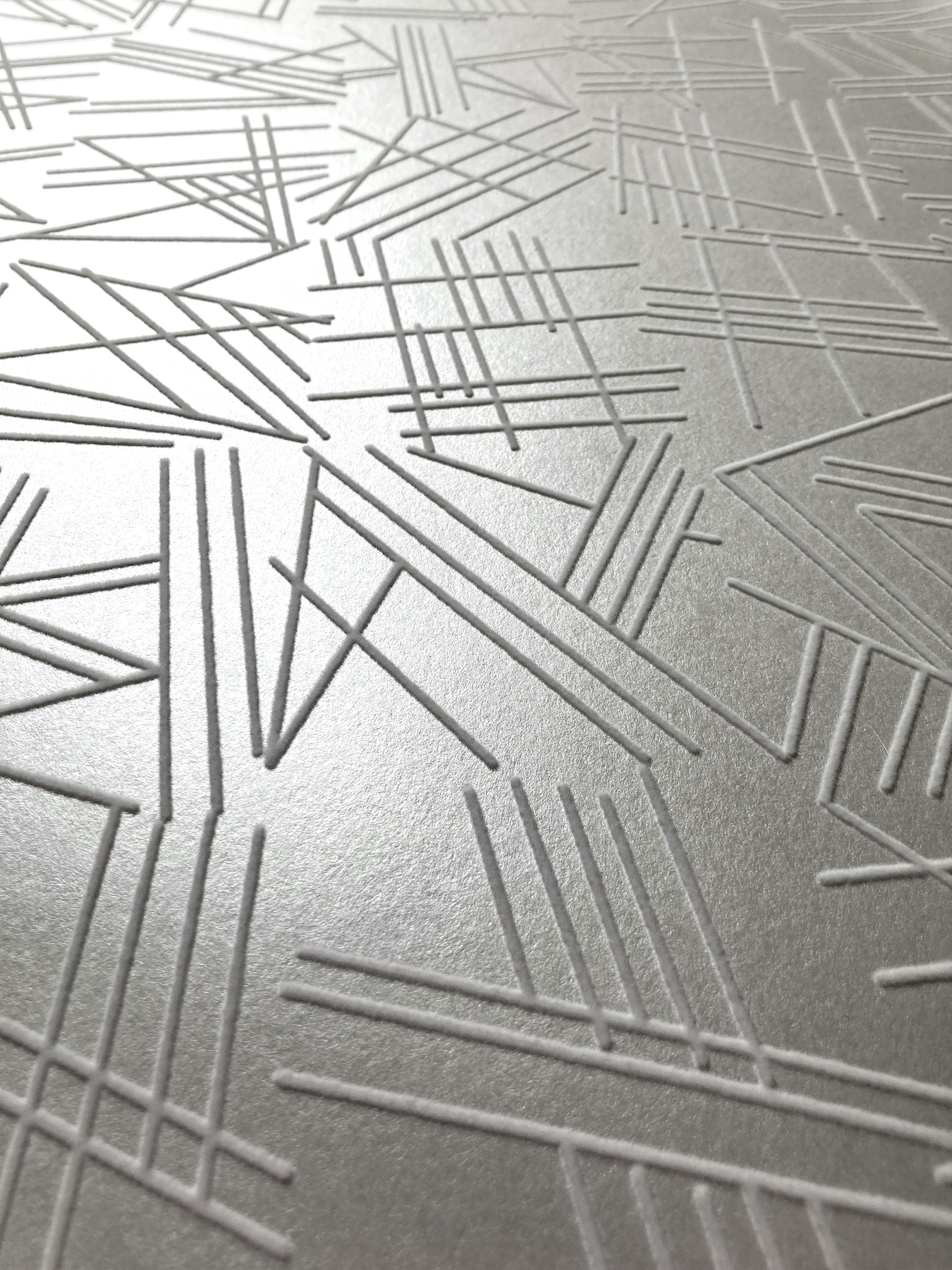
“I designed my first wallpapers in 2006,” she says. “Traditionally embellished wallpapers dominated the market then. I wanted mine to be more functional, to be integrated into a room’s architecture while softening or humanising it. My designs are intended to work as backdrops and create atmosphere. The flock wallpapers soften acoustics, while light bounces off the metallic designs, making spaces feel bigger.”
Lacquer homeware
In contrast to the trend for wallpapers with a subtle sheen and texture, deliciously glossy lacquer furniture and accessories are becoming popular. London-based interior designer practice Studio Atkinson, which produces homeware too, has a penchant for flamboyant furniture, as evidenced by its Mirror side tables and Buffed Up collection of hexagonal, octagonal and cuboid high-gloss lacquer tables.
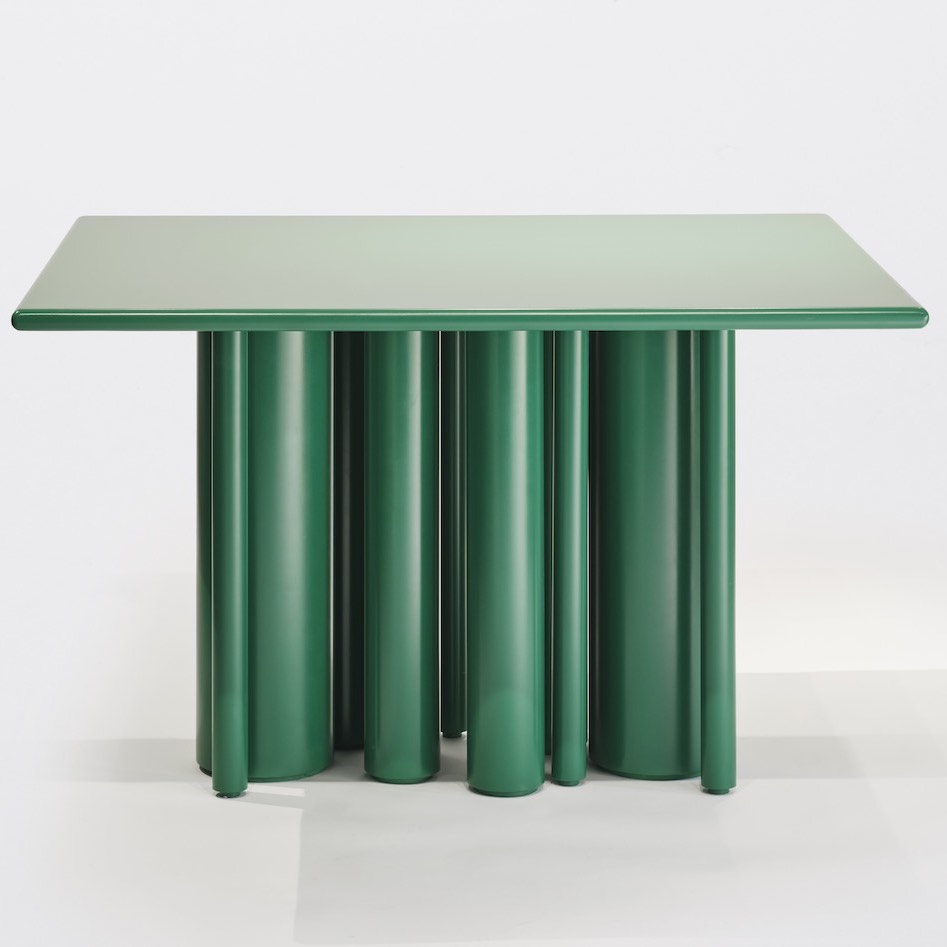

The latter recalls US artist Donald Judd’s early, boxy sculptures in one or two colours although the Studio Atkinson pieces, from daffodil yellow to peppermint green, are “pop art-inspired”, according to the studio. It has recently augmented the range with its equally playful yet elegant Two Tone side tables, inspired by liquorice allsorts sweets that were passed around the studio one day. This idea recalls the ultra-pop, so-called “fun furniture” designed by Jon Wealleans for cult 1970s boutique Mr Freedom, some of which was also shaped like liquorice allsorts. Yet the Two Tone tables that pair shades like Chinese lacquer red, dusky pink and ivory look a little more classic and grown-up.
Another noteworthy lacquer piece is the Townhaus Green table, designed by Shiro Muchiri, available from her London gallery SoShiro. Its apple-green matt lacquer finish is intended to evoke palm trees or bamboo groves. Its centrally placed legs are designed to give sitters plenty of legroom. And Matilda Goad has designed a delightful drinks tray with a multicoloured lacquer surface reminiscent of colour wheels or merry-go-rounds.
Ambient portable lights
Rechargeable portable lights are known for being practical and looking tidy, ridding tables and desks of messy cables and allowing users to move them around easily. But now there’s a growing trend for portable lights that appeal for casting an otherworldly ambient glow rather than for being purely functional. Shining examples include Occhio’s moon-inspired Luna Sogno, whose light source hovers within a glass orb, emitting a powerful yet glare-free glow. Sensors allow hand gestures to change the quality of light from warm to cool.
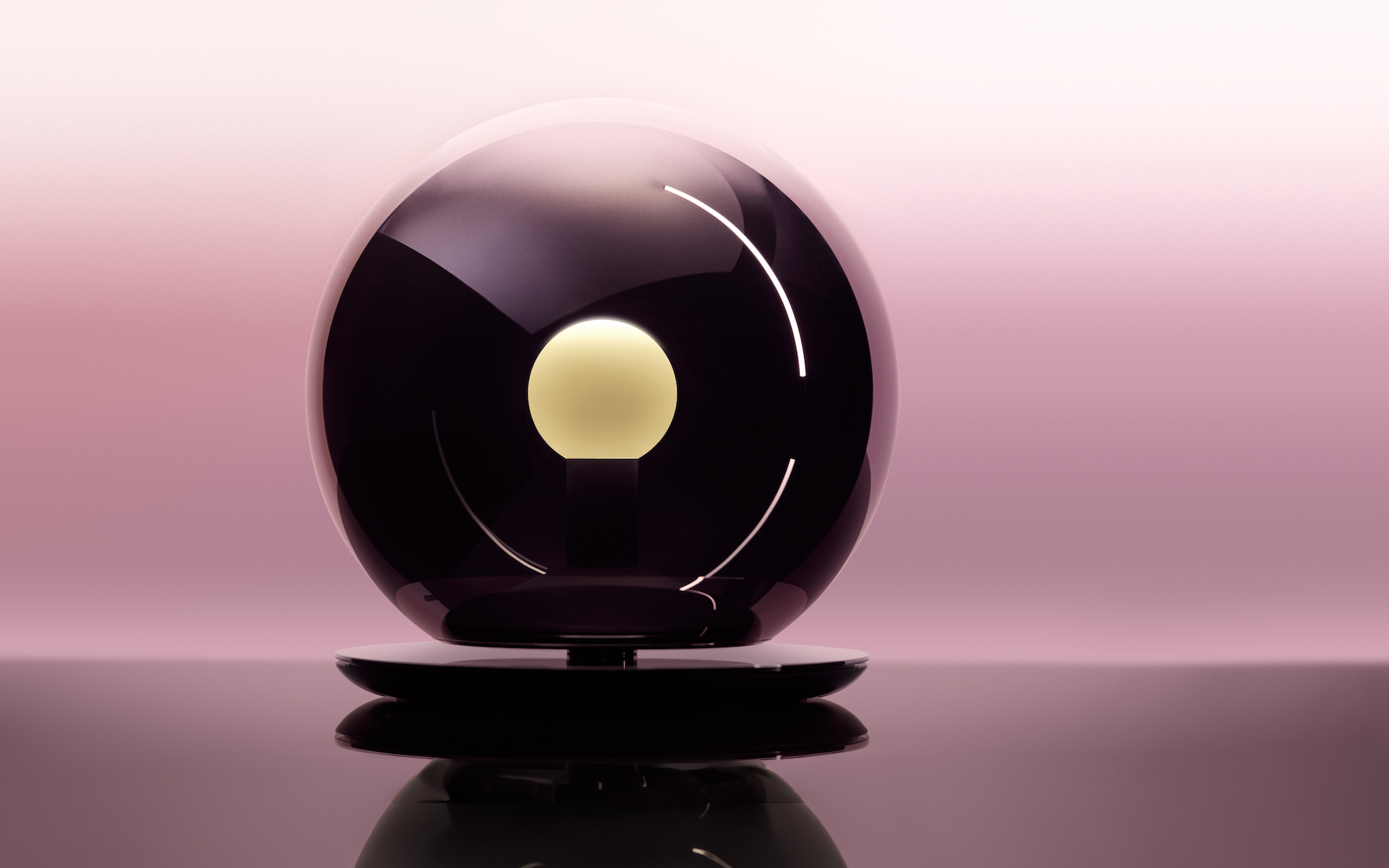
Some portable lights in this mould have been designed to look organic. Bocci’s hand-made, cordless 14p light comprises two conjoined glass hemispheres and an optional brass base. The USB-C and LED-compatible light evokes nature through what the company describes as “imperfections”. The hemispheres aren’t precisely aligned where they meet and the glass contains air bubbles, rendering it cloudy and causing the light it emits to appear rippled and water-like. A touch-controlled dimmer offers three levels of illumination. The 14p light can be used outdoors, too.
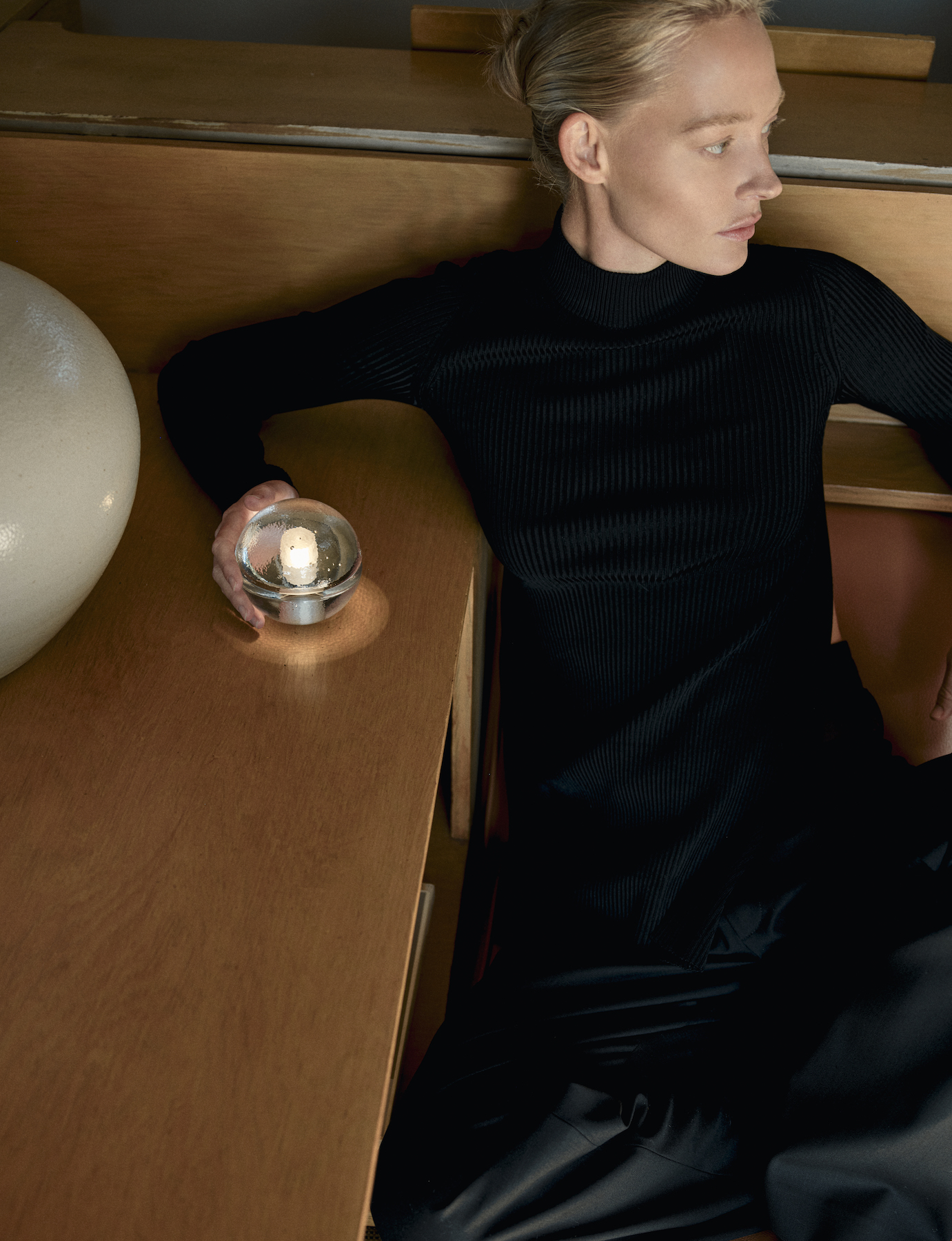
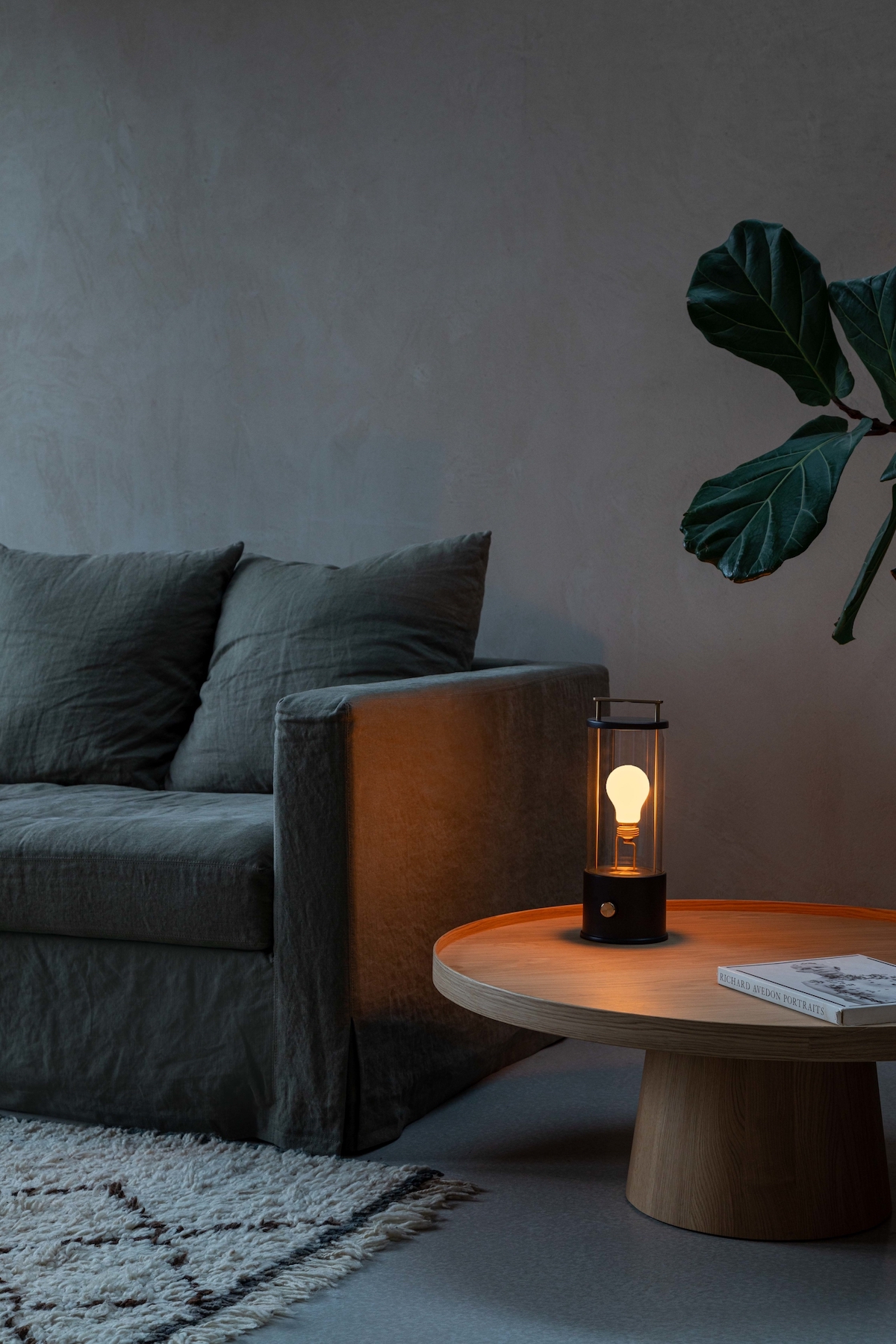
Ambient portable lights come in countless styles. Tala’s Muse portable lamp – available from The Roost – has an old-world charm thanks to its lantern-like shape. And Mathmos, a brand founded in 1963 and known for its iconic lava lamps, is enjoying a remarkable comeback: it has collaborated recently with such high-profile designers as Sabine Marcelis and Camille Walala. Its new portable, appealingly lo-fi Pod candle lava lamp, for use in house or garden, incorporates a tealight that heats it, causing its shape-shifting blobs to move freely. The retro-futuristic light will bring a chilled hippie vibe to any home.
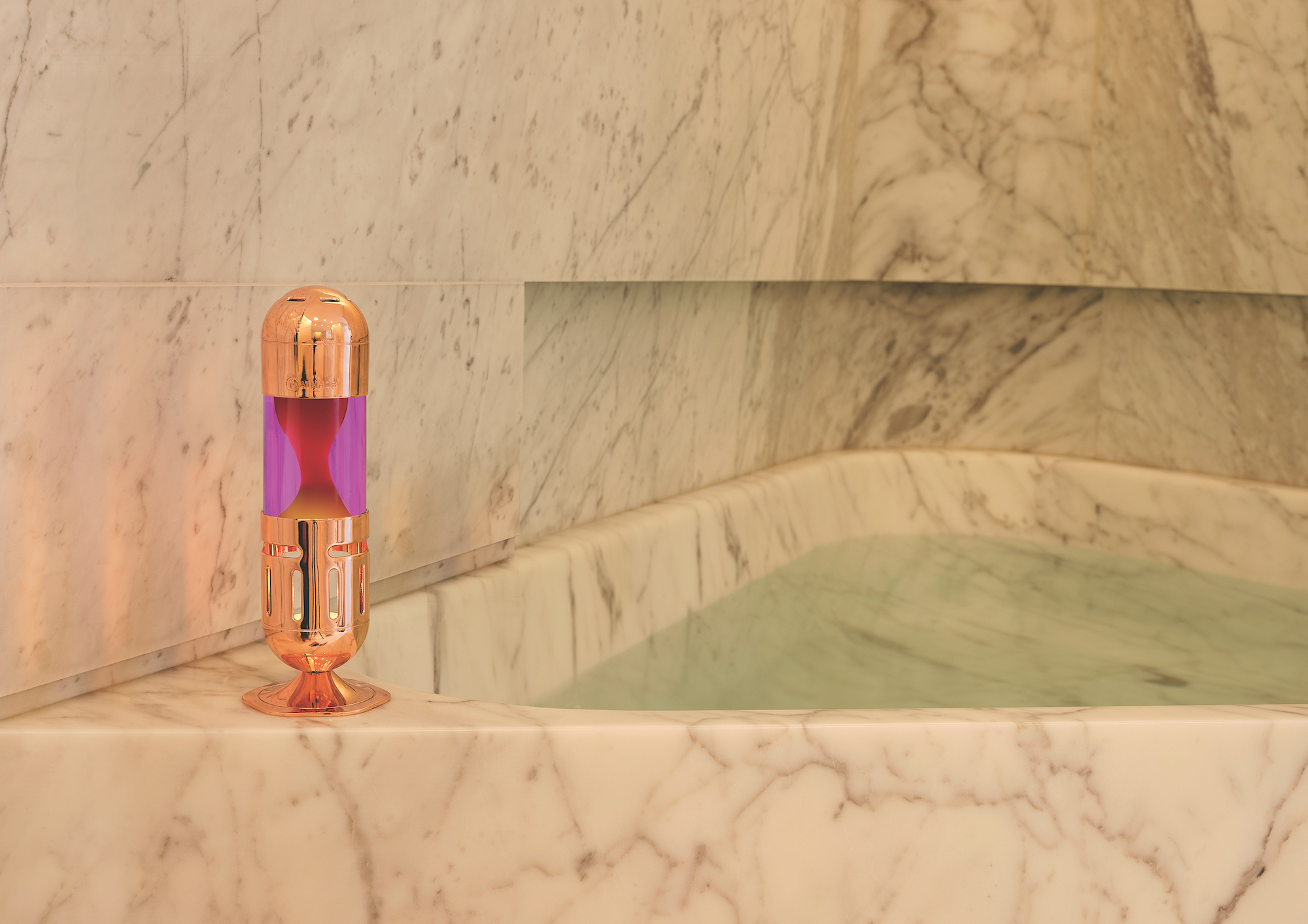
Contemporary basketry
One highlight of the London Design Festival last September was the show held by gallery The New Craftsmen that festooned a large wooden frame with baskets – the gallery’s Endangered Basketry collection that included work by such makers as Dominic Parrette, Clare Revera, Rachel Frost, Michelle Mateo and others.
The show highlighted and celebrated rare, threatened basketry techniques deployed in Britain for centuries – and a mushrooming interest in the craft, often made using sustainable materials.
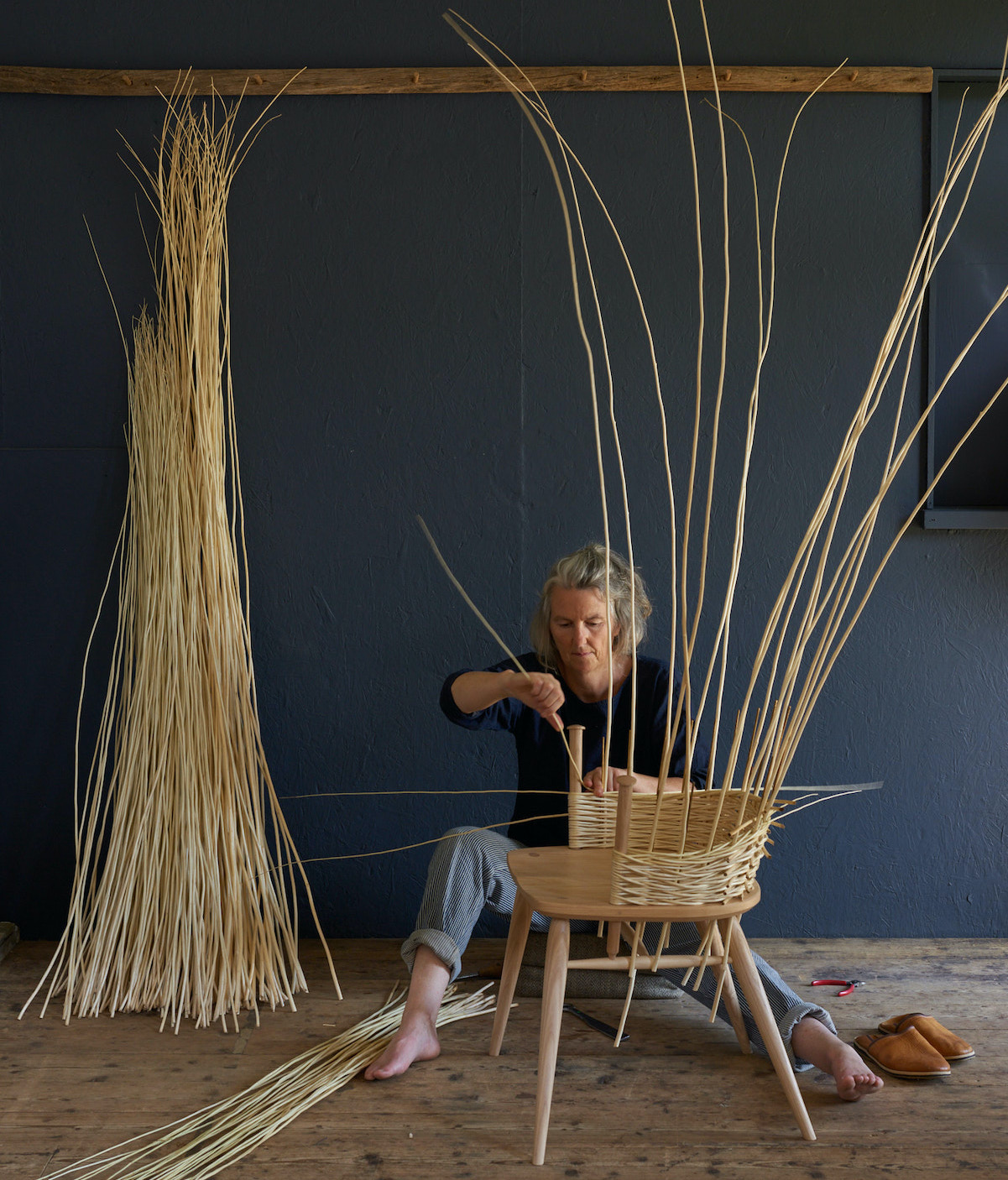
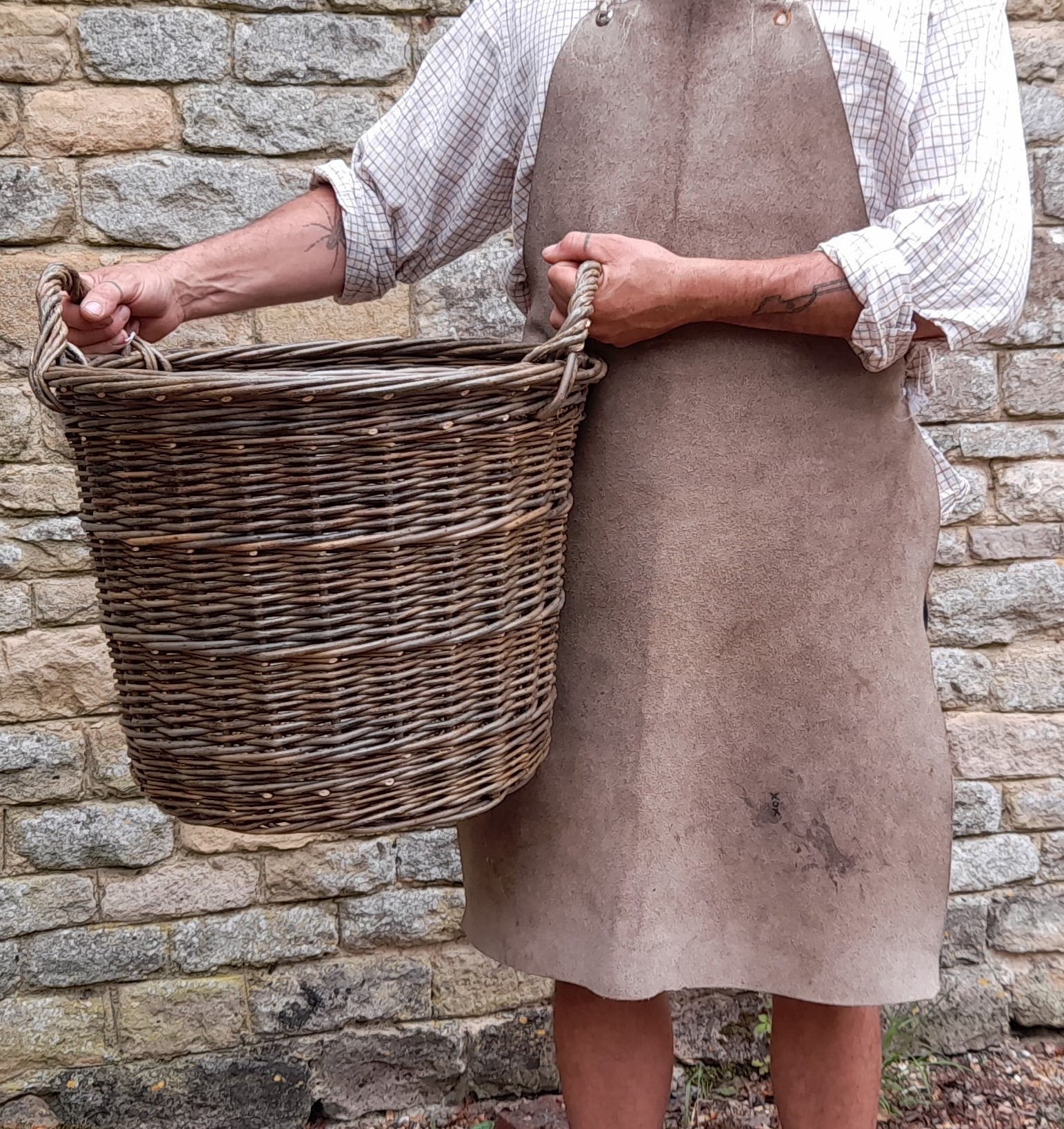
The gallery also sells work by Annemarie O’Sullivan and Tom McWalter of Studio Amos, based near Lewes, East Sussex, all made using willow that they grow, harvest and dry. “Growing and harvesting sustainable willow are a fundamental part of our life,” says O’Sullivan. The duo take a protean approach, using this versatile material to weave a wide range of products, such as chairs (designed in collaboration with Gareth Neal), lampshades and baskets. “We like to move between making functional baskets, lighting and larger sculptural work,” she adds.
The pair are also keen to preserve what has long been deemed a “lowly craft”, according to O’Sullivan. Lewes is a hub for makers of myriad crafts, she says: “Until the 1950s, there were basket-makers in every Sussex town. Lewes, which has plenty of willow beds around its flood plain, is no exception. Now we have an annual basketry festival, Over and Under, Lewes Festival of Basketry & Ceilidh, led by Susanna Longley, which attracts basket-makers from far and wide.”
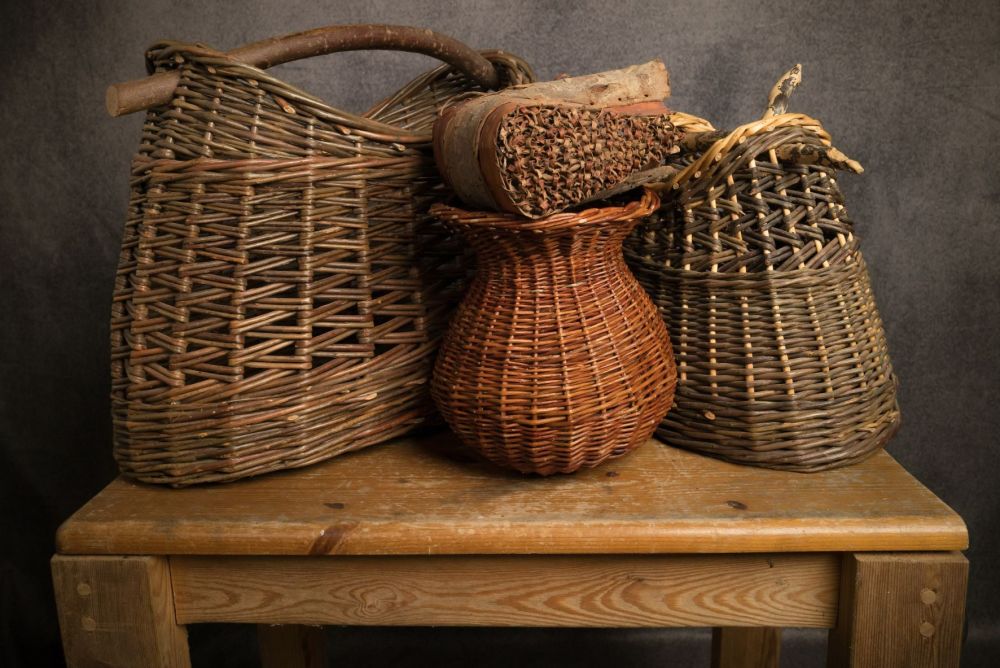
Studio Amos’s work is also sold by London’s Sarah Myerscough Gallery and can be seen at London craft fair Collect next March.
Another duo, Sue Kirk, grow and harvest their own willow in King’s Cliffe in Northamptonshire to create baskets. These are multifunctional, suitable also as storage containers in the home.
And using traditional materials and techniques, maker Debbie Hall gives the craft a contemporary twist. “I bring artistry to functional basketry, with subtly curved shapes woven from English willow – in a range of beautiful, natural colours – grown at my Cambridgeshire home.” Her baskets have long, oval bases and slightly inward-sloping sides – a shape that allows them to sit neatly on shelves and worktops, providing eye-catching and elegant storage. “I love shaping the willow with my hands, with no intervening tools,” she enthuses. “It’s deeply satisfying to be intimately involved in the whole process, from planting cuttings to creating a finished basket.”
Read more: Interiors | Trends | Design Fairs | Restaurants | Living Rooms | Dining Rooms | Bathrooms | Sustainable Design | Biophilic Design | Design



